Don't wanna be here? Send us removal request.
Text
How to Become a Software Engineer: Engineering Your Dreams

From the moment you wake up to check your smartphone to the self-checkout counter at the grocery store, software touches nearly every aspect of our lives. This silent force, the invisible engine behind countless technologies, is the product of software engineering. It’s a field that’s not just about writing code, but about designing, building, and maintaining the software systems that power our modern world.
But what exactly is software engineering? And why is it more important than ever in today’s tech-driven landscape? This article delves into the fascinating world of software engineering, exploring its impact, core principles, and exciting career opportunities.

Get ready to unlock the secrets behind the code that shapes our reality and discover if software engineering might be the path you’ve been searching for!
The importance of software engineering
Imagine a world without software. No smartphones connecting us, no online shopping carts, no streaming services transporting us to different worlds. This is the stark reality software engineers strive to avoid, for they are the architects of the digital infrastructure that underpins our modern lives.
The backbone of innovation
Software engineering is the foundation upon which countless industries thrive. From healthcare to finance, entertainment, and education, every sector relies on software to automate tasks, analyze data, and deliver seamless user experiences. It’s the language that speaks to machines, telling them how to perform complex calculations, power life-saving medical devices, and even personalize our online interactions.
Fueling digital transformation
As the world undergoes rapid digital transformation, the demand for software engineers skyrockets. The rise of artificial intelligence (AI), the Internet of Things (IoT), and cloud computing necessitates skilled professionals who can design, develop, and maintain these sophisticated systems. Software engineers are at the forefront of this technological revolution, whether it’s creating intelligent chatbots that answer customer inquiries or building self-driving cars.

Shaping society
The impact of software engineering extends far beyond the realm of technology. It has revolutionized communication, democratized access to information, and fostered global collaboration. Educational platforms empower individuals worldwide, while financial technology (FinTech) solutions promote financial inclusion. Software engineers are not just building tools, they’re shaping the very fabric of our society.
The future is code-driven
As technology continues to evolve at an exponential pace, the demand for skilled software engineers will only grow. This presents a unique opportunity for individuals with a passion for problem-solving, creativity, and innovation. By entering the world of software engineering, you’re not just building a career, you’re contributing to shaping the future.
Software engineer roles and responsibilities
Software engineering encompasses a diverse range of roles that each require specialized skills and expertise:
Front-end developers build and implement visual user interface components using HTML, CSS, and JavaScript. They focus on responsive design and optimal user interactions.
Back-end developers design and develop server, database, and API integrations that power core application functionality. They ensure seamless data flow.
Mobile Developers create native iOS and Android apps using Swift, Objective-C, Java, Kotlin, etc. They build for optimized mobile experiences.
Full-Stack Developers handle both front-end and back-end development. They possess a well-rounded skillset and understanding of full application architecture.
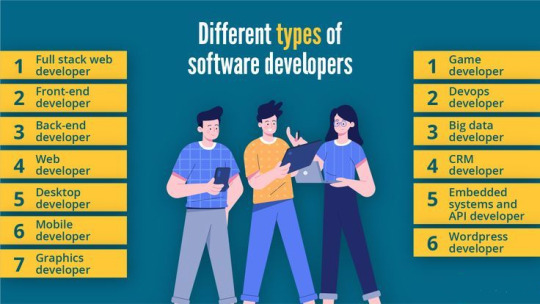
While specific duties vary by role, core software engineering responsibilities include: designing architecture, writing code, implementing software features, integrating components, testing, debugging, deployment, maintenance, and improving performance.
Ultimately, software engineering necessitates strong collaboration within multi-disciplinary teams. The interdependent nature of software requires continuous coordination to deliver complex products successfully. Teamwork is integral to building robust systems.
15 essential software engineer skills
Here are sections on essential software engineering skills and a roadmap for becoming a software engineer:
Programming languages: Java, Python, JavaScript, C++
Software design and architecture
Web development: HTML, CSS, databases, API integrations
Debugging and troubleshooting
Software testing and QA
Agile and SCRUM methodologies
Cloud computing platforms
Data structures and algorithms
Security principles
Version control with Git
Attention to detail
Problem-solving
Communication and collaboration
Time management and organization
Ability to learn and master new technologies
How to become a software engineer
Here are the key steps to becoming a software engineer:
Earn a computer science or engineering degree, or attend coding boot camps/online programs.
Build a portfolio through personal coding projects and open-source contributions.
Practice on platforms like LeetCode, Hackerrank, etc. to strengthen skills.
Participate in hackathons to gain hands-on coding experience.
Network and connect with engineers through events and developer communities.
Complete internships or entry-level roles to get professional experience.
Stay up-to-date on emerging technologies and industry trends.
Showcase both technical expertise and soft skills during the interview process.
Continuously learn and improve yourself even after getting hired.
With the right combination of education, experience, skills, and perseverance, a career in software engineering is within your reach.
Software engineer career path progression
The beauty of software engineering lies in its diverse career options. You can:
Specialize in specific technologies: Become an expert in areas like front-end development, back-end development, mobile app development, data science, or cybersecurity. Each path offers unique challenges and rewards.
Lead the way: Transition into team lead roles, mentoring junior engineers and overseeing project deliverables. Hone your leadership and communication skills to guide your team toward success.
Embrace management: Climb the ladder into management positions, overseeing larger teams, projects, or even entire departments. Develop strategic thinking and people management skills to drive organizational growth.

Lifelong learning
Technology is constantly evolving, so continuous learning is crucial for software engineers. Stay updated with the latest trends, programming languages, and frameworks through online courses, workshops, and hackathons. Remember, the software you build today might be obsolete tomorrow, so adaptability is key.
Do you dream of building your software empire? With the right skills and determination, the software engineering world welcomes entrepreneurs. Start your own software company, develop innovative solutions, and become your boss.
Work-life balance in software engineering
While demanding, achieving work-life balance is possible in software engineering. Set clear boundaries, communicate effectively with your team, and prioritize your mental health. Look for companies with positive work cultures that value employee well-being and offer flexible work arrangements. Remember, a healthy you = a productive you!
Software engineer salaries
Software engineers often enjoy competitive salaries, with variations based on experience, location, and specialization. With the increasing demand for skilled professionals, salary potential is high. Remember, negotiation is important! Advocate for your worth and ensure you’re receiving fair compensation.
Choose the right software development program
Whether you choose a traditional college degree, intensive boot camps or online courses, there’s a path for everyone. Consider factors like cost, time commitment, and your learning style to find the program that best aligns with your goals and needs. Structured programs can provide valuable guidance and mentorship, but self-learning is also a viable option for highly motivated individuals.
Take the initiative to research different educational programs, connect with software engineers in your network, and explore online resources. The world of software engineering is waiting to be unveiled!
Remember: Your software engineering journey is unique, and shaped by your passions, skills, and aspirations. Embrace continuous learning, explore diverse career paths, and find the way that allows you to contribute meaningfully to this ever-evolving field. The exciting world of software engineering awaits!
Conclusion
Software engineering isn’t just a career path; it’s a gateway to innovation, problem-solving, and shaping the future. As we’ve explored, this ever-evolving field offers diverse and rewarding opportunities, from specializing in cutting-edge technologies to leading teams and even starting your venture.
Interesting headings:
Affiliate marketing case studies
Bonuses
Reviews
0 notes
Text
Top 20 Programming Languages You Should Learn in 2024

Imagine yourself commanding machines with words, creating very complex systems that can come to life through your spoken word and develop complete digital worlds. No, we are not talking about science fiction but programming in our daily lives.
Programming languages are just like the normal languages we use to communicate with computers; they enable us to instruct this sophisticated machinery on what it should do and how it should do that.
However, for novices, this programming world looks terrifying, full of enigmatic icons and strange expressions. Do not despair! Your map awaits you so that you can know and select even equipment for your own superpowers of software development. So, let’s get ready for this thrilling ride together!
What is a programming language?
Programming languages may seem intricate, but essentially they are just tools we employ in speaking to computers. We speak English to give commands to our fellow human beings, likewise, a programming language is used to pass instruction codes to a computer. In each language, there are its own rules as well as symbols, just like my language grammar works.

Think of it like writing recipes. With instructions and ingredients (data), you create delicious dishes (programs). Programming languages follow similar principles, using instructions and data to create digital applications, websites, and more.
Here’s a breakdown:
Human languages: we use English, Spanish, etc. to tell others what we want.
Programming languages: we use Python, Java, etc. to tell computers what we want them to do.
Programming languages can be:
Structured: they have rules and syntax to ensure clarity and avoid confusion.
Precise: each instruction needs to be exact, as computers understand things literally.
Versatile: different languages have different strengths, making them suitable for different tasks.
Translatable: while computers have their own language, programming languages act as translators, converting our instructions into something the computer can understand.
In short, programming languages are communication tools that bridge the gap between our ideas and the digital world. They open doors to exciting possibilities, allowing us to bring our creations to life!
Major types of programming languages
The world of programming languages is vast and diverse, each with its own strengths and quirks. Let’s explore some major types to give you a better understanding:
Procedural
Imagine a recipe with clear steps. Procedural languages, like C, Pascal, and FORTRAN, follow a similar approach. They break down tasks into a sequence of instructions, one after the other, like a chef following a recipe.
Example: In C, you might write code to calculate the area of a circle: float radius = 5.0; float area = 3.14159 * radius * radius; printf(“The area of the circle is: %.2f\n”, area);

Functional
Think of building blocks snapping together. Functional languages, like Haskell, Clojure, and Lisp, focus on independent functions (like blocks) that solve smaller problems. These functions can be combined to create larger programs, similar to building a complex structure with individual pieces.
Example: In Haskell, you could define a function to calculate the factorial of a number and use it later in your program: factorial n = if n == 0 then 1 else n * factorial (n-1)
Object-oriented
Imagine objects with their own properties and abilities. Object-oriented languages, like Java, Python, C++, and Ruby, model real-world objects. You create “objects” with data (properties) and functions (abilities) that interact with each other, making code more organized and reusable.
Example: In Python, you could create a “Car” object with attributes like color and speed, and methods like accelerate and brake.

Scripting
Think of quick notes or shortcuts. Scripting languages, like Python, Perl, and Bash, are often used for automating tasks or small programs. They are generally easier to learn and use than other languages, making them good for beginners or quick fixes.
Example: In Python, you could write a script to automate downloading files from the internet.
Logic
Imagine solving a puzzle with clues. Logic languages, like Prolog, use logical rules and relationships to solve problems. They are often used in artificial intelligence and expert systems, where reasoning and deduction are important.
Example: In Prolog, you could write code to determine if a given word is a palindrome (reads the same backward and forward).
Imperative
Imagine directly controlling a machine. Imperative languages, like C and C++, give programmers precise control over how the computer executes instructions. They are often used for system programming and tasks requiring fine-grained control.
Example: In C, you could directly manipulate memory addresses and perform low-level operations on the computer hardware.
Top programming languages in 2024
Programming is a constantly evolving niche, with new technologies and trends shaping the landscape. So, what languages are at the forefront in 2024? To answer that, let’s take a pulse of the industry.
Current trends
Data science & AI: the ever-growing demand for data analysis and artificial intelligence fuels the popularity of languages like Python, R, and Scala.
Cloud computing: as businesses migrate to the cloud, languages like Go and JavaScript (Node.js) are in high demand for scalable and efficient cloud applications.
Mobile development: the ubiquitous presence of smartphones keeps languages like Kotlin (Android) and Swift (iOS) relevant for building engaging mobile apps.
Security: with rising cyber threats, secure coding practices and languages like Rust are gaining traction.
Now, let’s dive into some of the most sought-after languages in 2024, keeping these trends and demands in mind.

Machine code languages on colorful elements – Programming concept
C and C++
C and C++ are powerful, low-level programming languages known for their speed and efficiency. C is often used for system programming, while C++ adds object-oriented features. Both languages are widely used in operating systems, game development, and embedded systems.
C#
Developed by Microsoft, C# is a versatile language used for building a variety of applications, including desktop, web, and mobile apps. It combines the power of C++ with the simplicity of Java, making it popular among developers.
CSS
CSS (Cascading Style Sheets) is a language used to style web pages written in HTML. It allows developers to control the layout, fonts, colors, and other visual aspects of a website, enhancing the user experience.
Go
Go, also known as Golang, is a statically typed, compiled language developed by Google. It emphasizes simplicity, efficiency, and concurrency, making it ideal for building scalable web services and distributed systems.
HTML
HTML (Hypertext Markup Language) is the standard language for creating web pages and web applications. It defines the structure and content of a webpage, including text, images, and links.
Java
Java is a high-level, object-oriented programming language known for its portability and versatility. It is used for building a wide range of applications, from enterprise software to mobile apps and games.
Javascript
Javascript is a dynamic, interpreted language primarily used for client-side web development. It enables interactive web pages by adding behavior and interactivity to HTML and CSS.
Kotlin
Kotlin is a modern, statically typed language developed by JetBrains and officially supported for Android app development by Google. It offers concise syntax, null safety, and interoperability with Java, making it a popular choice for Android developers.
Matlab
Matlab is a high-level programming language and interactive environment designed for numerical computation, data analysis, and visualization. It is widely used in engineering, science, and mathematics.
NoSQL
NoSQL is not a specific programming language but rather a category of databases that do not use the traditional relational database model. NoSQL databases offer flexible schema design and are designed to handle large volumes of unstructured data.
Perl
Perl is a versatile, interpreted language known for its powerful text-processing capabilities. It is commonly used for system administration, web development, and network programming.
PHP
PHP is a server-side scripting language used for web development and building dynamic web pages. It is widely used in conjunction with HTML to create interactive websites and web applications.
Python
Python is a high-level, interpreted language known for its simplicity and readability. It is used for a wide range of applications, including web development, data analysis, artificial intelligence, and scientific computing.
R
R is a programming language and environment specifically designed for statistical computing and graphics. It is widely used in data analysis, statistical modeling, and visualization.
Ruby
Ruby is a dynamic, object-oriented language known for its simplicity and productivity. It is often used for web development, particularly with the Ruby on Rails framework, which emphasizes convention over configuration.
Rust
Rust is a systems programming language developed by Mozilla known for its focus on safety, performance, and concurrency. It is designed to prevent common programming errors such as null pointer dereferencing and memory leaks.
Scala
Scala is a statically typed language that combines object-oriented and functional programming paradigms. It runs on the Java Virtual Machine (JVM) and is used for building scalable, high-performance applications.
SQL
SQL (Structured Query Language) is a domain-specific language used for managing and manipulating relational databases. It is used to query, insert, update, and delete data from databases.
Swift
Swift is a powerful, open-source programming language developed by Apple for building iOS, macOS, watchOS, and tvOS applications. It offers modern syntax, safety features, and performance optimizations.
TypeScript
TypeScript is a superset of Javascript that adds static typing and other features to the language. It is designed to improve the development experience and scalability of large Javascript projects.
Conclusion
Remember, the programming world is a vast and exciting landscape. While this guide has highlighted some popular languages, the perfect one awaits you based on your unique interests and goals.
Interesting headings:
Affiliate marketing case studies
Bonuses
Reviews
0 notes
Text
Mastering Editorial Process: Step-by-Step Approach to Content Promotion

You may have heard that there’s more to content than just writing and editing. There is also structure, and there are processes… What are those processes and how editorial workflow is different from the rest? After reading this article, not only will you understand that, but also how to initiate and design editorial processes, apply proper algorithms, and maintain them after launch.

What editorial processes are
Editorial processes refer to the established guidelines followed by editorial and horizontal departments in the creation, editing, reviewing, and publishing of consistently produced content.
These processes are designed to ensure consistency, quality, accuracy, and adherence to established guidelines in various forms of media, such as articles, blogs, and more. Without written procedures, it is difficult for the team to stay organized and on track. They are crucial for maintaining control and efficiency in a constantly changing environment.
Why do we need editorial processes
Editorial processes establish specific actions and rules of interaction with the team and departments, which enable the editorial team to deliver results more clearly. They serve as a roadmap to prevent getting lost. More specifically, editorial processes are needed for:
Collaboration. Editorial processes facilitate collaboration between different team members and departments involved in content creation. By providing clear guidelines and processes, team members can work together more effectively and ensure that all aspects of content creation are addressed.
Accountability. By defining roles, responsibilities, and workflows, editorial processes help establish accountability within the team. Team members know what is expected of them and can be held accountable for meeting deadlines and quality standards.
Efficiency. Having established editorial processes streamlines the content creation workflow, making it more efficient and reducing the chances of delays or errors. This can help save time and resources, allowing the team to focus on creating high-quality content.
Consistency. Editorial processes help ensure consistency in content production, style, tone, and quality. This consistency is important for maintaining the brand voice and identity across all content published by the organization.
Onboarding. It’s easier to onboard new employees when there is turnover or permanent hiring. You don’t have to explain all the processes, practices, and rules to everyone separately. You just provide a hub with documents, walk through the process, and answer any clarifying questions.

When to launch editorial processes
Editorial processes are like a bridge between the blind “doing” of something and the goal. Each process should facilitate movement towards the end of the bridge — the goal. There are no universal processes — they all depend on the specifics and purpose of the company.
For example, editorial processes are unnecessary when working on a one-off project — you just need a plan with milestones to agree on intermediate results.

But you can realize it’s time to implement editorial processes when you need to:
Perform routine tasks consistently and accurately
Ensure that all team members are confident in producing quality content
Manage projects that require various formats and specialized capabilities
Facilitate seamless collaboration with designers, editors, and marketers
Meet the demand for diverse content from the editorial team
Prepare for future growth and the need to hire additional staff
How to launch editorial processes
Launching editorial processes involves careful planning and execution to ensure efficiency and effectiveness. Here are some steps to help you launch editorial processes successfully.
Analyze the current situation
You can’t build an intelligent editorial process based on theoretical knowledge of how to run it. The process is always based on an analysis of the company:
What content it produces
How each content format is produced
With whom each unit is coordinated
How content is approvedThe number of approvals needed in a startup, a medium-sized company, and a corporation is very different and affects the time it takes to produce content.
How long it takes for designers, developers, editors, or layout designers to do their job
Where the editorial team is stumbling right now
Start with a minor process
Begin by designing a single minor process, rather than tackling the entire production. This approach will allow you to test the waters and gauge the flexibility of the team, as well as identify any areas of resistance. If the small process doesn’t yield the desired results, no problem — the stakes are low and no significant damage will occur.
Build a process skeleton based on data
Once we have an understanding of how the company and the editorial staff work, it’s time to implement the processes. Global processes pose a high level of risk. If you incorrectly allocate less time, you may end up having to report to stakeholders about unmet KPIs.
It’s better to proceed with caution: begin by outlining important processes in a concise, skeletal manner.
Then assess whether the author comprehends the task, how much time the editor needs for coordination, and how much time is required to finalize the plan. Is everything running smoothly? Is anything malfunctioning? Based on this data, you can then develop the detailed process.

What to do when processes are launched
Getting it up and running is only part of the job. It’s important to follow up on processes:
Observe
Adjust as the company changes
Communicate value to the team
This should be done by the person responsible for the processes. But it’s unlikely that one person in a large editorial office will be able to control everything — you’ll have to delegate it to your team.
Communicate the value of the processes in a meeting
A meeting is perceived as an event: the team schedules time for it, prepares for it (in the best-case scenario), listens to the speaker, and asks questions.
An event typically garners more attention — it is evidently more significant than a message in a task tracker. The team actively engages with the event and seeks clarification — which is why they are more likely to remember the information shared during the event.
It’s not enough to just send a document. One person may misunderstand the thesis, another may skim through it and miss details, and a third may not open it at all. If something can go wrong, it will go wrong. That’s why it’s important to communicate verbally.
Conduct an audit of processes
Get together as a team and once a month (or week) discuss on a global scale the issues. Points to discuss during these meetings:
Confirm whether marketers, designers, and project managers are accurately familiar with and adhering to the processes
Evaluate how well new team members understand and comply with the processes
Gather feedback on new processes or modifications to existing ones
Discuss the overall comfort level of the team and gather general feedback
If you work in a large corporation, it is advisable to reach out to related departments to gather their feedback as well.
By following these steps and implementing a structured approach, you can successfully launch editorial processes that support your content creation efforts and drive business objectives.
Interesting headings:
Affiliate marketing case studies
Bonuses
Reviews
0 notes
Text
What Is Data Collection: Methods, Types, Tools

Data collection has become a pivotal process in the modern digital landscape across countless industries and applications. With the exponential growth of data being generated daily, the ability to effectively collect, process, and analyze information provides greater insights and competitive advantages.
As data accumulates at an accelerating rate from an expanding array of sources, the techniques, and technologies for data collection are evolving rapidly. This guide will provide an overview of fundamental concepts, methods, tools, and best practices to consider when implementing an effective data collection framework tailored to your needs. With the right approach, data can become an invaluable asset for gaining meaningful, actionable intelligence.

This article delves into the fundamental concept of data collection, exploring its various methods, applications, and best practices. We’ll unveil the reasons behind its growing importance and equip you with the knowledge to navigate this essential process. Get ready to embark on a journey of discovery, where data transforms from mere numbers into powerful insights!
What is data collection?
Data collection is the systematic process of gathering information relevant to a specific research question, objective, or problem. It’s like sifting through the vast sands of information to find the specific grains that answer your burning questions.
There are two fundamental types of data collection methods:
Quantitative methods focus on collecting numerical data that can be measured and quantified. Examples include surveys, metrics, website analytics, etc.
Qualitative methods gather non-numerical data like interview transcripts, observations, focus group responses, etc. to provide context.

Choosing the right approach depends on your specific research question and what you want to learn. Sometimes, a combination of both quantitative and qualitative methods can provide the most comprehensive understanding.
Why do we need data collection?
Several key benefits highlight the importance of proper data collection:
Informed decision-making: Data provides concrete evidence to either support or refute assumptions and hypotheses. This enables data-driven strategic choices rather than guesswork.
Problem-solving: Comprehensive data analysis helps accurately identify the root causes of problems. This allows for developing targeted solutions.
Improved understanding: Collecting quality data reveals insights into field trends, patterns, and relationships. This builds institutional knowledge.
What are the different data collection methods?
Now that we’ve established the critical role of data collection, let’s delve into the diverse tools at your disposal. Each method comes with its own strengths and weaknesses, so choosing the right one depends on your specific research question and resources. Here’s a glimpse into the most common options:
Surveys
What it is: Questionnaires administered to a sample of the target population. Can be conducted online, paper-based, or via phone.
Advantages: Efficient way to gather data from a large group, standardized format for easy analysis, cost-effective.
Disadvantages: Response bias, low response rates, limited ability to explore complex topics in depth.

Interviews
What it is: In-depth conversations with individuals or groups, allowing for exploration of nuances and deeper understanding.
Advantages: Richer data with detailed information and diverse perspectives, flexible and adaptable to follow up on interesting points.
Disadvantages: Time-consuming and resource-intensive, potential interviewer bias, limited reach compared to surveys.
Observations
What it is: Direct observation of behavior or phenomena in real-time, capturing natural interactions and nonverbal cues.
Advantages: Provides unbiased data on actual behavior, avoids self-reporting bias, and is suitable for studying sensitive topics.
Disadvantages: Can be time-consuming and expensive, observer bias may influence interpretation, and limited generalizability to broader populations.

Experiments
What it is: Controlled tests to study cause-and-effect relationships by manipulating variables and observing the outcome.
Advantages: Provides strong evidence of causality, eliminates confounding factors, high internal validity.
Disadvantages: Time-consuming and expensive to set up and control, artificial setting may limit generalizability to real-world situations, and ethical considerations.
Existing data
What it is: Utilizing data already collected by other sources (e.g., government agencies, research institutions).
Advantages: Saves time and resources, readily available data on various topics, can be used for large-scale studies.
Disadvantages: Data quality and relevance may vary, limited control over data collection methods, and potential copyright or access restrictions.
Data collection tools
There are various tools and platforms available to facilitate the data collection process:
Online survey platforms like SurveyMonkey, Qualtrics, Typeform, etc. allow creating, distributing, and analyzing surveys.
Mobile data collection apps like Fulcrum, SurveyCTO, KoBoToolbox, etc. enable field data gathering on tablets and phones.
Interview recording software like Otter.ai, Trint, Descript, etc. provide automated transcriptions of qualitative interviews.
Data analysis software like Excel, Python, R, etc. help process, analyze, and visualize complex datasets.
How to choose the right data science program
With the growing demand for data skills, pursuing a quality data science program has become crucial for aspiring professionals in this field. Choosing the right program tailored to your goals and needs can help you gain the required capabilities to succeed as a data scientist.
If you’re interested in a rewarding career in data, research programs that provide a balance of hands-on training and theoretical foundation across key areas like statistics, machine learning, data analysis, visualization, and more. Compare curriculum, program formats, career support services, and other factors to find your best fit. Investing in robust data science education will equip you with in-demand skills to thrive in today’s data-driven world.

What are common challenges in data collection?
While data collection enables critical business intelligence, it also carries some inherent challenges:
Low response rates for surveys and interviews impact sample representation.
Difficulty accessing niche target groups within populations.
Data quality issues like biases, inaccuracies, and incomplete data.
Time and resource limitations on data collection initiatives due to costs.
Accounting for these challenges in the planning stage and designing appropriate mitigation strategies is key to maximizing the value derived from data collection efforts.
What are the key steps in the data collection process?
Navigating the world of data collection requires precision and planning. Just like constructing a sturdy building, collecting reliable data involves a series of crucial steps. Let’s explore the key stages and potential challenges to ensure your data remains a trustworthy foundation for your research or analysis.
Conducting an effective data collection initiative involves these core steps:
Define the specific research question or objective guiding the data needs.
Choose appropriate quantitative and/or qualitative data collection methods aligned to the goals.
Develop data instruments like surveys, interview guides, and observation protocols based on the methodology.
Pilot test instruments on a smaller sample and refine as needed.
Officially collect data from the full target sample using the refined instruments.
Clean, process, and manage the raw data for analysis by handling missing values, anomalies, etc.
Issues related to maintaining the integrity of data collection
Several potential issues can compromise the integrity of collected data:
Sampling bias: When your sample doesn’t represent the target population, your data may be skewed. Ensure your sampling method is unbiased and representative.
Measurement errors: Inaccurate data collection methods or instruments can lead to faulty results. Use reliable methods and calibrate instruments regularly.
Data manipulation: Intentionally altering data to fit a desired outcome is unethical and undermines the entire research process. Maintain data security and transparency.
Ethical breaches: Respecting participants’ privacy and informed consent is crucial. Ensure your data collection adheres to ethical guidelines and regulations.
Mitigating these risks through careful design, transparency, objectivity, and ethics is crucial to ensure data quality and validity. This maintains stakeholder confidence in the collection process and subsequent findings.
Conclusion
Data collection isn’t just gathering numbers; it’s about unlocking the potential of information to inform decisions, solve problems, and gain deeper understanding. This guide has provided a comprehensive overview of the key concepts, methods, and best practices involved in this crucial process.
Remember, the right data, collected effectively, can be a powerful tool for individuals, organizations, and societies alike. So, harness the power of data collection, and transform your understanding of the world around you.
Interesting headings:
Affiliate marketing case studies
Bonuses
Reviews
0 notes
Text
Design in Digital Marketing: A Visual Approach to Success

Design plays a crucial role in digital marketing, as it serves as the visual representation of the message and values you want to spread. It is what captures the attention of the target audience and entices them to engage with the content.
As digital platforms have become increasingly saturated with content, it has become more challenging to stand out and capture the audience’s attention. And a well-designed digital marketing campaign can powerfully impact brand recognition and customer perception.
That’s why, today, let’s delve deeper into the topic of design in digital marketing.

Where we need design in digital marketing
Design is essential in many aspects of digital marketing. Here are some areas where we need designers’ expertise.
Design for websites and landing pages
Designers are needed to create visually appealing, user-friendly websites and landings that align with the brand’s identity and effectively communicate the brand’s message. The way a website or landing page is designed can significantly impact user experience, engagement, and ultimately conversion rates.
When designing websites and landing pages, it’s important to consider the overall user experience. This includes:
Creating a clean and intuitive layout
Making sure the navigation is easy to use
Ensuring that the design is visually appealing
The goal is to create a seamless and enjoyable experience for visitors, so they are more likely to stay on the page and take the desired action.
Additionally, as we already said, the design should be in line with the brand’s identity and convey the intended message. This includes using consistent branding elements, such as colors, fonts, and imagery, to create a cohesive look and feel.
For landing pages specifically, the design should be focused on achieving a specific goal, such as capturing leads or promoting a product or service. This means using persuasive copy and compelling visuals, as well as clear and prominent calls to action.
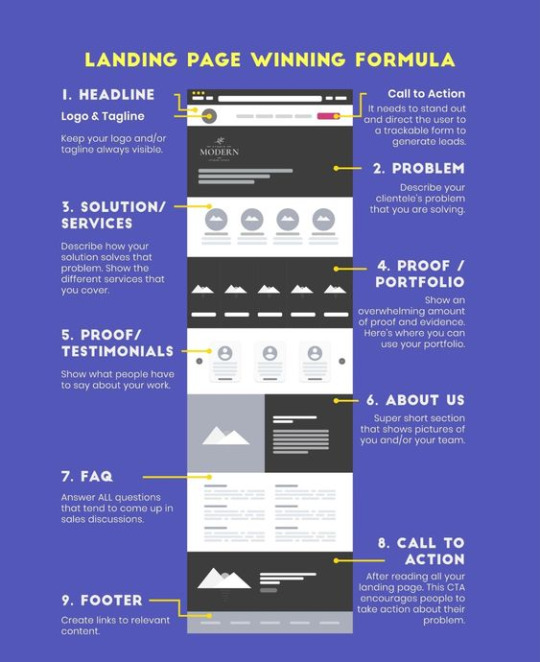
In terms of technical considerations, the design should be responsive and optimized for various devices and screen sizes. This ensures that the website or landing page looks and functions well on desktops, tablets, and smartphones, providing a consistent experience across all devices.

Social media graphics
Social media graphics are visual elements that are designed and optimized for sharing on social media platforms. These graphics are created to engage and attract the attention of the audience while conveying a specific message. Social media graphics can come in various forms, including:
Static images
Infographics
Animations
Videos
They are tailored to the specific requirements and guidelines of each social media platform, such as:
Recommended dimensions
File formats
Aspect ratios
Optimizing graphics for each platform ensures that they will display properly and grab the viewer’s attention as they scroll through their feed.
The importance of social media graphics lies in their ability to enhance the overall look and feel of a brand’s social media presence. Eye-catching and visually appealing graphics can:
Help to increase engagement
Drive traffic to a website
Ultimately leads to conversions
Using on-brand imagery and design elements can also help to establish a consistent and professional image for a brand across different social media channels.
When creating social media graphics, it’s important to consider:
The target audience
The message to be conveyed
The overall branding of the business
A strong understanding of design principles, color theory, and visual hierarchy is also crucial to creating graphics that effectively communicate the desired message.
Email marketing
Design plays a crucial role in email marketing. By creating visually appealing email templates, graphics, and layouts, designers help increase open rates and click-through rates. When designing an email, consider the following best practices:
Responsive design. With the majority of email being opened on mobile devices, it’s important to ensure that your emails are responsive and can be easily read and navigated on any screen size.
Clear call-to-action (CTA). Use strong, compelling CTAs that stand out and encourage recipients to take action. Whether it’s making a purchase, signing up for an event, or downloading a resource, the CTA should be clear and easily clickable.
Brand consistency. Your emails should reflect your brand’s identity and be consistent with your website, social media, and other marketing materials. Use your brand colors, fonts, and imagery to maintain a cohesive look and feel.
Visual hierarchy. Use a clear visual hierarchy to guide the recipient’s eye through the email, emphasizing the most significant info and CTAs.

Display advertising
For display advertising to be effective, it must have a compelling and engaging design. Design in display advertising plays a crucial role in capturing the attention of the target audience, conveying the brand’s message, and ultimately driving customer engagement and conversions.
One of the key aspects of design in display advertising is visual appeal. The ad must be visually attractive and eye-catching to grab the viewer’s attention. This can be achieved through the use of:
High-quality images
Vibrant colors
Creative concepts
The design should be attention-grabbing without being overwhelming or distracting.
Another important aspect of design in display advertising is brand consistency. The ad design should be in line with the overall branding of the company, including the use of the brand’s colors, fonts, and imagery. Consistent design helps to reinforce brand recognition and create a cohesive brand experience for the audience.
Furthermore, the design of display ads should be tailored to the specific audience and context in which they will be displayed. This can include creating ads that align with the interests and preferences of the target audience, as well as aligning with the content of the website or app on which they are being displayed.


Trends in digital marketing design
Digital marketing design trends are constantly evolving as technology advances and consumer preferences change. Some of the most important trends in digital marketing design include:
Mobile-first design. With the increasing use of mobile devices, digital marketing designs need to prioritize mobile responsiveness and usability. This means creating designs that are easily accessible and engaging on smaller screens.
Interactive content. Interactive content, such as quizzes, polls, and 360-degree videos, is becoming increasingly popular as it allows for more engaging and personalized experiences for users.
Personalization. Personalized marketing designs tailored to specific audience segments are becoming essential for capturing and retaining the attention of consumers.
Minimalist design. Clean, minimalist designs with easy navigation and clear calls to action are important in digital marketing to ensure a seamless user experience.
Augmented reality (AR) and virtual reality (VR). AR and VR technologies are increasingly being used in digital marketing to create immersive experiences for users. This trend is especially popular in the retail and gaming industries.
Final thoughts
It is clear that designs play a crucial role in digital marketing, and their impact cannot be underestimated. The need for continuous innovation in visual strategies is evident to stay ahead in the ever-changing digital landscape. Businesses need to prioritize and invest in creative and effective design strategies to stand out and make a lasting impact in the digital world.
Interesting headings:
Affiliate marketing case studies
Bonuses
Reviews
0 notes
Text
The Trends and the Future of Payments in iGaming

iGaming operators strategically offer a myriad of payment methods, meticulously tailored to the diverse needs and habits of their customers. In this exploration, we’ll ride the waves of existing payment methods, particularly focusing on the Blockchain and crypto growing in popularity in the niche. We’ll highlight some trends and possible payment solutions in the future.

Payment methods
As we said, in the realm of online gambling, operators provide a diverse array of payment methods tailored to the needs and habits of their customers. Let’s surf through the existing payment methods and see what options are available today:
Debit and credit cards, conventional and widely utilized, facilitate the transfer of funds directly linked to users’ bank accounts or credit lines. Cards stand out as the predominant online payment method across various GEOs, including Brazil, the USA, India, Mexico, the UK, Canada, Japan, and Turkey.
Digital wallets have become a pervasive force in online gambling, renowned for their swiftness and security (take, for instance, the widely embraced PayPal). Digital wallets empower players to fund their accounts without directly exposing confidential bank details. Furthermore, their adaptability, particularly in terms of multi-currency support, renders them appealing to international players.
Direct debit offers players a convenient method to pay for iGaming, enabling the gaming platform to automatically withdraw funds from their bank accounts without the need for manual transactions every time.
Bank transfers stand out as a secure method for transferring money, even though they may take longer compared to faster alternatives. This method caters to individuals who prefer traditional banking approaches over digital wallets or card payments.
Buy Now, Pay Later (BNPL) services empower users to make deposits and settle payments in convenient installments, offering flexibility with minimal upfront costs. The integration of BNPL services into an iGaming platform’s payment system reflects an understanding of contemporary user habits.
Mobile payment solutions like Apple Pay and Google Pay add unparalleled convenience to the iGaming experience. Players can effortlessly input their bank account or card details into the mobile wallet app.
Blockchain technology and cryptocurrencies are relatively new, but already well-established options for payments in online gambling. Today, we see how these technologies are reshaping the landscape of the iGaming industry. So let’s take a closer look at them.

Crypto trends in iGaming
Cryptocurrencies present a decentralized, secure, and transparent payment solution, effectively addressing numerous challenges encountered by gambling platforms. It’s evident that they are steadily gaining popularity in the realm of the niche.
Softswiss data illuminates a remarkable surge in cryptocurrency bets, showcasing a substantial increase from nearly $3 billion in the first quarter of 2021 to an astonishing $6 billion in the first quarter of 2022, marking a remarkable 116% growth.
A majority of users gravitate towards well-established cryptocurrencies, with Bitcoin standing out as the dominant choice in the gaming landscape.
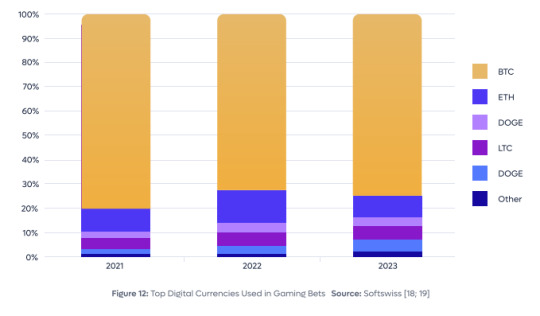
Delving into user deposit patterns on the Softswiss platform, Kaminari discovered some interesting insights. Almost 79% of customers prefer depositing modest amounts, ranging from $10 to $50, while an overwhelming 99.7% of casino customers opt for deposits below $500. In stark contrast, a mere 0.03% of customers make more substantial deposits exceeding $1,000.
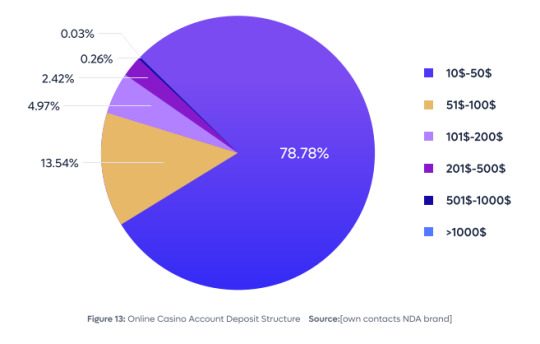
As the demand for crypto-payments continues to rise, the need for fast and cost-effective transactions becomes increasingly crucial. Imagine: making a deposit in BTC on-chain for amounts up to $50 currently incurs a transaction fee of approximately $10, with an average waiting time of around half an hour. So, in the case of Bitcoin, the potential transition to the Lightning Network emerges as a game-changer, offering online casino users faster transaction speeds and cost savings for both deposits and withdrawals.
Lightning Network
The Lightning Network (LN) is the primary Layer 2 (L2) project for the Bitcoin blockchain. It enables instantaneous transfers (up to 2 seconds). This speed surpasses traditional Visa or Mastercard payments, and the associated network fee is approximately 4 cents. As of the end of May 2022, the total capacity of LN channels reached 3900 BTC.
The primary role of LN is to facilitate direct exchanges among bitcoin holders without recording information in the primary blockchain. To achieve this, users initiate a specialized channel with a single on-chain transaction and deposit bitcoins into it.
Once activated, the payment channel enables off-chain transfers — transactions outside the main network. In contrast to on-chain transactions, those conducted within Lightning Network channels remain visible solely to the involved parties. Only the initial and final states of transactions are recorded in the main blockchain. So there is a substantial breakthrough in user flow and experience on the horizon.
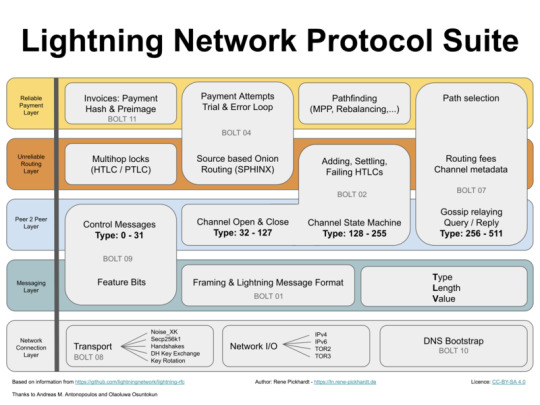
Final thoughts
Crypto technologies are ceaselessly advancing, and the iGaming niche is adeptly adapting, nearly spearheading the charge. What the near future holds for us, as the pace of change is remarkably swift? Will cryptocurrency have the potential to supersede all other payment methods, or is it merely a matter of time? It’s undeniably intriguing!
Interesting headings:
Affiliate marketing case studies
Bonuses
Reviews
0 notes
Text
Revolutionizing Data Sharing: Data Clean Rooms

The global big data market is on a hot streak, expected to skyrocket from $345 billion to a whopping $842 billion between 2023 and 2030. While this growth is promising, it also presents a challenge: over 80% of companies are not yet fully utilizing big data. This is due to a lack of data skills and expertise, as well as an inadequate infrastructure for extracting valuable insights from vast data pools.
To address this challenge, data clean rooms (DCR) have emerged as a crucial solution. Data clean rooms provide a secure digital space where different companies can safely share data without compromising privacy. This is achieved through sophisticated encryption techniques that protect raw data during the analysis process. Data scientists can then effectively utilize this shared data to gain deeper insights into customer behavior, improve products and services, and make better-informed decisions.

What is DCR and how it works
Imagine if you could combine all the data you have about your customers, from your website to your CRM to your advertising campaigns. Wouldn’t that help you target your marketing more effectively and measure the results more accurately? That’s what data clean rooms (DCRs) can do for you.
DCRs are a kind of digital playground where companies can share their data with each other without revealing who it belongs to or what it contains. This is done by making the data anonymous, pseudonymous, or aggregated so that it can’t be traced back to an individual person.
At its core, the principles driving Data Clean Room (DCR) hinge on fostering collaboration among companies delving into data work of this nature. DCR carves out a dedicated space, a digital haven, where participants can seamlessly share their data without baring its essence or divulging its origin.
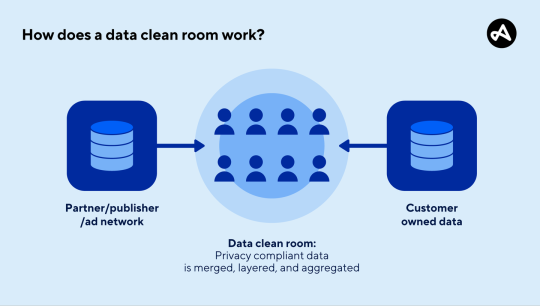
Picture this as a high-security vault for sensitive data — DCR ensures that the information is either anonymized, pseudonymized, or aggregated. This strategic safeguarding is the fortress against unauthorized access or any potential misuse of the data. The overarching goal is crystal clear — to slash the risk of data breaches and keep user confidence soaring.
In simpler terms, DCR crafts a secure ecosystem for the exchange of data, a space where collaboration flourishes under the protective umbrella of anonymization and stringent access controls.
Why anyone needs data clean rooms
We stand at the brink of a monumental shift. The advertising approaches, leaning on cookies for the past three decades for targeting, analytics, and consumer insights, are undergoing a seismic transformation.
Here’s the twist — 48% of those trusty cookies are now out of the game. It’s the wake-up call prompting the rapid deployment of new tools built on robust identifiers. These identifiers are set to play a starring role in the fresh landscape of targeted advertising, and their effectiveness hinges on forging partnerships between data custodians.
Presently, the playground for big data testing, courtesy of telecom operators, retailers, and e-commerce juggernauts, is accessible only through cozy collaborations within closed ecosystems. But, fear not, there’s a game-changer on the horizon, opening up a gateway to analytics and targeting possibilities. Enter the scene-stealer — DCR.

DCR benefits for companies
DCRs have a lot of benefits for companies. They can help you create more accurate profiles of your customers, which can then be used to target your marketing efforts more effectively. They can also help you measure the results of your campaigns more accurately, so you can see what’s working and what’s not.
Plus, DCRs protect your customers’ privacy. By anonymizing or pseudonymizing the data, you’re making sure that their information is safe and secure. This is important for companies that want to comply with data privacy regulations.
So, if you’re looking for a way to improve your targeting and measurement, and protect your customers’ privacy, then DCRs are a great option.
Why affiliates need DCR
For affiliate marketers, data clean rooms are invaluable for gaining insights without privacy concerns. Given tighter regulations, secure data collaboration is essential.
Data clean rooms let affiliates and partners analyze combined data to get a fuller picture of audiences and metrics. Advanced encryption ensures this occurs without exposing raw data.

Improved targeting
By combining first-party data from advertisers with second-party data from publishers in a secure clean room, affiliate marketers can gain a more comprehensive view of their target audiences. This allows campaigns to be finely targeted for optimal relevance.
For example, an affiliate for fitness products could work with a health website publisher to analyze combined user data. This can reveal deeper insights into audience interests and habits that inform better targeting.
Increased conversion rates
With improved targeting capabilities from clean room data collaborations, affiliate marketers can serve ads and offers to audiences when they are most likely to convert. This drives up conversion rates exponentially.
Reduced costs
Data clean rooms eliminate the need for affiliate marketers to purchase expensive third-party data for targeting and insights. By pooling first-party data resources with partners, affiliates gain more value from owned data assets.
In a nutshell, clean rooms provide faster marketing insights and better targeting, while maintaining privacy compliance. They allow affiliates to maximize the value of first-party data with publishers and advertisers, too.
Applying DCR in your marketing efforts
Overall, DCRs are a powerful tool that can help companies improve their targeting, measurement, and privacy. As companies continue to collect and use more data, DCRs are likely to become even more important. Here are some specific examples of how DCRs are being used:
A car manufacturer can use a DCR to share its first-party data with a financial services company. The financial services company can then use this data to target car buyers with offers for car loans or insurance.
A retailer can use a DCR to share its customer data with a marketing agency. The marketing agency can then use this data to create personalized marketing campaigns for the retailer.
A consumer packaged goods (CPG) company can use a DCR to track the effectiveness of its advertising campaigns. The company can combine data from its own marketing campaigns with data from retailers to see how its campaigns are driving sales.
Last thoughts
DCRs, safeguarding sensitive data through anonymity and stringent controls, redefine targeted advertising amid the demise of cookies. For companies, DCRs unlock precise profiling, campaign measurement, and privacy compliance benefits. Affiliates find DCRs invaluable for improved targeting, higher conversion rates, and reduced costs.
In marketing, DCRs stand as powerful tools for refining targeting, enhancing measurement, and fortifying privacy. As data’s importance surges, DCRs emerge as vital compasses, guiding companies through the complex data landscape toward actionable insights.
Interesting headings:
Affiliate marketing case studies
Bonuses
Reviews
0 notes
Text
20 Unique & Most Effective Interview Questions

The hiring process can be a daunting task, especially when you’re looking to find the right fit for your company. After all, your team is the backbone of your business, and you want to ensure you’re bringing in people who are not only qualified but also passionate and committed to your company’s goals.
That’s where the art of the hiring interview comes in. A well-crafted interview can be a powerful tool for uncovering a candidate’s true potential and assessing their suitability for the role. But how do you ensure you’re asking the right questions and getting the most out of your interviews?

The significance of a well-conducted interview
When orchestrated effectively, interviews transcend the mundane hiring process, transforming it into an engaging interaction that benefits both parties. A well-conducted interview is like a dance, making the job search an enjoyable experience for both the employer and the candidate.
According to a study by Seed Scientific, the complexity of a job interview correlates with higher employee satisfaction, showcasing a 2.6% increase with a 10% tougher interview process. The interview journey, spanning an average of 20 to 40 days from the first meeting to a job offer, is a multifaceted exploration that can unfold various dimensions of a candidate’s personality and capabilities.
Interview fun facts
Job interviews take an average of 40 minutes.
Companies have an average of nine interview stages.
Recruiters spend 5 to 7 seconds going through resumes.
61% of CFOs believe that the best time to conduct an interview is between 9 am to 11 am.
Candidates get an average of 2–3 interviews before getting a job offer.
33% of recruiters know if they’ll hire someone within the first 90 seconds.
47% of interviewers don’t hire candidates with no knowledge about the company.
65% of candidates that don’t make eye contact don’t get the job.
Recruiters discard 76% of resumes that have unprofessional email addresses.
74% of HR managers prefer structured interviews.
55% of interviewers say that interviewees respecting dress codes make great first impressions.
60% of hiring managers use video interviews.
75% of employers are keen on the availability of key skills.
88% of employers acquire superior candidates from referrals.
The power of questions
The first step to a successful interview is to ask the right questions. These questions should be designed to get to the heart of a candidate’s experience, skills, and personality. They should also be insightful and thought-provoking, challenging the candidate to think critically and demonstrate their problem-solving abilities.
Here are some examples of strong interview questions you can use to assess a candidate’s suitability for your role.

Describe your ideal job and company to work for
This question acts as a compass, guiding you through the candidate’s expectations, aspirations, and perception of an ideal work environment. It’s like peering into a crystal ball to foresee whether their career goals align with your company’s offerings.
Do you believe it’s more important to work fast or get the job done right?
This question is a delicate balance, akin to walking a tightrope. It unveils the candidate’s approach to work – an essential insight for aligning expectations regarding quality and efficiency.
Do you want to become a manager, leader, or executive in our company?
Leadership, a latent quality even in non-managerial roles, is explored here. The question unveils the candidate’s potential to step into leadership shoes and contribute to the organization’s growth.
How do you choose what companies and roles to apply to?
This query is a window into their preferences, interests, and how well their career goals match the opportunities your company presents. It’s akin to fitting puzzle pieces to ensure a seamless alignment.
How do you think our customer service, product, or website can be improved?
Consider this question a canvas where creativity and problem-solving skills paint a picture. It’s not just about their suggestions, but also about gauging their thought processes and ability to contribute meaningfully.
If you are offered more than one job, how will you decide which one to accept?
This question is a strategic puzzle, challenging candidates to think critically about their priorities and make decisions. It’s a peek into their decision-making prowess.
If you were an animal, which one would you want to be?
Beyond the whimsy lies a psychological probe. The choice of animal unveils traits, and the ensuing discussion digs deep into whether these traits align with the role and company culture.
If you were our CEO, what’s the first thing you would want to do?
A hypothetical scenario unfolds, offering insights into the candidate’s understanding of leadership responsibilities. It’s a litmus test for their strategic thinking and managerial vision.
What are the three positive things your last boss would say about you?
While positivity might flow freely, the real test lies in the depth and authenticity of their responses. It’s a doorway to understanding their self-awareness and how they perceive their strengths.
What are your favorite books, industry, websites, and other resources?
This question is a gateway to the candidate’s intellectual pursuits and how they stay informed about industry trends. It’s akin to examining the tools in their mental toolbox.
What are your goals?
Beyond the professional realm, this query delves into their aspirations, defining what propels them forward. The answer can unveil character, values, and the alignment of personal and professional goals.

What are your weaknesses?
The age-old inquiry is a mirror reflecting self-awareness. It’s an opportunity for candidates to showcase humility and demonstrate a proactive approach to personal development.
What can you do for us that other candidates can’t?
This question is a spotlight, casting attention on their unique value proposition. It’s about what makes them stand out in a competitive landscape, akin to a product differentiating itself in a crowded market.
What kind of work would make you excited to get out of bed on a Monday morning?
This is the ignition switch to enthusiasm. The answer unravels whether their passions align with the job on offer, creating a harmonious synergy between personal excitement and professional responsibilities.
What salary are you seeking?
Beyond monetary figures, this question unveils their understanding of industry standards and self-worth. It’s a negotiation dance, where both parties aim for a mutually beneficial arrangement.
When were you most satisfied with your job?
Satisfaction is a compass guiding toward fulfillment. Understanding the instances that brought them joy provides insights into their preferences and what fuels their job satisfaction.
Who are your role models and mentors?
This query unveils the attributes and values they admire, reflecting on their own character. It’s like exploring the foundations of their professional and personal philosophy.
Why did you leave your previous job?
The departure from past roles reveals a narrative. Understanding the reasons provides clarity on their decision-making process, loyalty, and whether their values align with your organizational culture.
Why do you want to work here?
This question seeks alignment – between their aspirations and what your company offers. It’s a mirror reflecting their motivations and how well they’ve researched and resonate with your organization.
Why should we hire you?
The final question is the grand finale, prompting candidates to articulate their unique contributions. It’s an opportunity for them to shine and showcase how they seamlessly integrate into the organizational puzzle.
Conclusion
Interviews are a harmonious blend of strategy, psychology, and human connection. Each question is a note, contributing to the symphony that is the hiring process. The task of an interviewer is to not only ask questions but to listen, observe, and decipher the nuances that unfold between the lines.
By asking effective questions, paying attention to nonverbal cues, and using behavioral interviewing techniques, you can make a more informed decision and find the perfect person to fill your open position.
Interesting headings:
Affiliate marketing case studies
Bonuses
Reviews
0 notes
Text
7 Fundamentals Of Icon Design

Icons play a vital role in digital marketing by conveying meaning visually across websites, apps, infographics, and more. To engage audiences effectively, icons should follow certain design principles. However, creating effective icons requires a deep understanding of fundamental principles and design techniques. Let’s explore seven core considerations for creating professional icon sets.
Why icon design matters
Icons are essential visual elements that play a crucial role in enhancing user experience across various digital platforms. They serve as a powerful tool for conveying meaning, functionality, and brand identity, and they can significantly impact the overall usability, accessibility, and aesthetic appeal of a product or service.
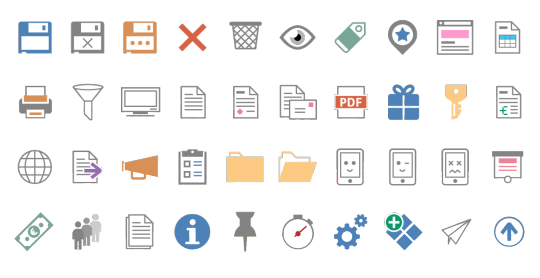
Enhancing usability and intuitive navigation: well-designed icons can effectively communicate actions and functions, enabling users to quickly and easily navigate through interfaces. By providing visual cues that are universally understood, icons eliminate the need for extensive text descriptions, reducing cognitive load and enhancing the overall user experience.
Strengthening brand identity with visual consistency: a consistent icon set can effectively represent a brand’s personality and values, reinforcing brand recognition and establishing a cohesive visual identity across multiple touchpoints. By using a consistent style and color palette, icons can convey a brand’s unique essence and establish a sense of familiarity among users.
Translating concepts and functionality across language barriers: in contrast to text-based interfaces, icons offer an unparalleled advantage in terms of global accessibility and inclusivity. As visual representations, icons transcend language barriers and can be understood by users regardless of their native tongue. This makes them invaluable for creating seamless user experiences for a global audience.
Enhancing aesthetic appeal and engagement: icon design extends beyond functionality, playing a significant role in shaping the overall aesthetic appeal of a user interface. Thoughtfully crafted icons can add visual interest, vibrancy, and personality to a design, injecting charm and character into the overall experience.
Pixel-perfect precision for scalability and professionalism: icons should be designed with pixel-perfect precision to ensure consistent appearance across varying screen sizes and resolutions. This level of detail contributes to a polished and professional brand image, demonstrating attention to detail and a commitment to quality.
Minimalism for scanability and focus: while icons can add visual interest, it’s crucial to maintain a minimalist approach, avoiding excessive detail and clutter. Too many intricate elements can hinder scanability and make it difficult for users to quickly grasp the intended meaning of the icon.
Distilling complexity into intuitive symbolism: effective icon design is about simplifying complex concepts into easily recognizable symbols. By using universally understood shapes, lines, and forms, icons can convey meaning immediately, fostering a sense of understanding and emotional connection with users.
Consistent visual weight
Icons, despite their petite size, play a crucial role in user interface hierarchies. Achieving consistent visual weight among icons ensures that users can easily distinguish between primary and secondary actions, aiding navigation and usability. This can be achieved by adjusting the size, line thickness, color saturation, or overall complexity of the icons.
Example: Imagine a set of icons where one stands out as significantly larger than the rest. This incongruity not only disrupts visual harmony but also erodes the brand’s credibility.
Simplicity and minimalism
Icons thrive on simplicity and minimalism. By stripping away unnecessary details and focusing on essential shapes and forms, icons become more recognizable and memorable. Avoid cluttering icons with overly intricate details or gradients, as these can hinder legibility and clarity.

Example: Picture an animated icon set overloaded with unnecessary details. The result? Icons that appear heavy, confusing, and fail to resonate with the audience.
Creating icons with a consistent brand voice
Icons should seamlessly align with the overall brand identity, reflecting the brand’s personality and visual style. This consistency ensures that icons reinforce brand recognition and contribute to a cohesive user experience. Consider using the brand’s color palette, typography, and overall aesthetic to create icons that resonate with the brand’s essence.
Example: Consider a scenario where a brand uses diverse icon styles across various media. This inconsistency may create an impression of a shapeshifting, unreliable business.
Designing icons with enough white space
White space, also known as negative space, is an essential element in icon design. While it may seem counterintuitive, strategic use of white space can make icons more impactful and visually appealing. White space allows icons to breathe, reducing visual clutter and emphasizing the icon’s essential elements.
Example: Envision a set of icons crammed together without adequate white space. The result? A chaotic and unprofessional appearance that undermines user experience.
Pixel-perfect design
Icons are typically displayed on digital screens, where pixelation can be an issue. To ensure that icons maintain their crispness and clarity, it’s crucial to design them with pixel-perfect precision. This involves paying close attention to line weights, proportions, and overall resolution to ensure that icons look their best across different screen sizes.
Example: Imagine encountering a set of icons that appear blurry on certain devices. This inconsistency detracts from the overall professionalism and cohesiveness of the brand.
Contrast & color palettes
Contrast plays a vital role in icon design, making it easier for users to distinguish between foreground elements and background elements. Use contrasting colors to make icons stand out and ensure that they are easily recognizable. However, consider the overall color palette of the app or website to ensure that icons complement the existing design.
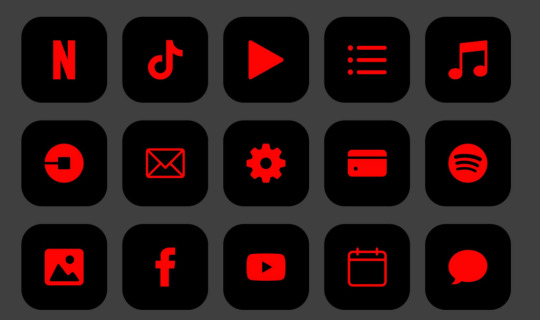
Example: Visualize a scenario where contrasting colors are too dark, rendering icons nearly invisible. Alternatively, excessively light colors may clash with website themes, compromising user experience.
Geometric shapes have more influence
Geometric shapes are often preferred in icon design due to their inherent simplicity and universal understanding. Circles, squares, triangles, and other basic shapes can effectively convey a wide range of concepts and ideas. However, don’t shy away from experimenting with more complex shapes if they effectively represent the intended meaning.
Example: Envision an icon designed with haphazard free-form elements. This lack of structure may instill uncertainty in consumers and diminish their confidence in the associated content.
The bottom line
Consistency, meticulous attention to user experience, and a strategic blend of design elements form the bedrock of creating professional icon sets. Each principle, from maintaining visual weight to embracing geometric shapes, contributes to a cohesive, visually appealing, and trustworthy brand image. As you embark on your icon design journey, remember: every pixel matters, and each shape tells a story.
By adhering to the fundamentals discussed above, designers can create icons that are not only visually appealing but also functional, consistent, and aligned with the overall brand identity.
Interesting headings:
Affiliate marketing case studies
Bonuses
Reviews
0 notes
Text
Search Engines Respond to AI Taking Over Content Feed

The problem of AI-generated content
According to Europol, by 2026 the share of synthetically generated content may reach 90%. Nearly 50 news websites likely have been generated with the help of artificial intelligence (AI), e.g., Famadillo or Scoopearth. Let’s not forget about the deepfakes, which can make anything sound plausible, e.g., Barack Obama calling Donald Trump “a total and complete dips**t”.

Deepfakes won’t cause a war, not yet at least. But since Tesla stock crashed after Elon Musk smoked weed on a live web show, deepfakes can be used to manipulate stock markets, influence voters, and instigate religious tensions. They can be misleading, harassing, pejorative, offensive, and worst of all — persuasive.
While a perfectly disguised deepfake requires advanced technologies and time, other forms of AI-based content are relatively easy to produce. When released to the public as is, AI-created content can launch a vicious cycle of fake news. That’s why distinguishing human from AI-generated content is a top priority of search engines and content moderators.
Attitude toward AI-generated content
While initially reluctant to allow AI copywriting, Google does not care any longer about content origins. However, Google insists on the high quality and value of content, i.e., to be based on E-E-A-T:
Expertise
Experience
Authoritativeness
Trustworthiness
After all, if the content is interesting, unique, and adds value to the reader, does it matter whether it’s written with the help of or by AI?
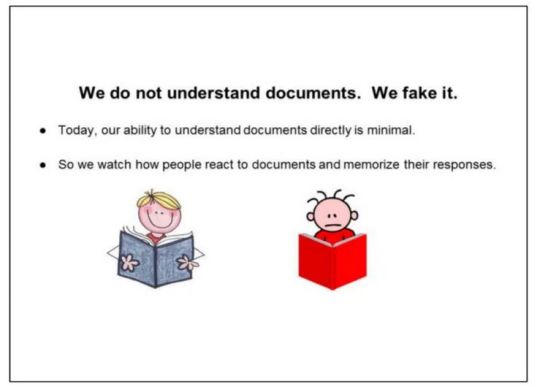
Search Engine Land about Google Search
As of 2024, it appears Google relies on user interactions on Search Engine Result Pages (SERPs) to judge content quality. Google uses a combination of automated and manual processes to assess content quality. In the initial assessment, Google checks for grammatical correctness and general coherence. The second round of assessment is based on user interactions with the content. If users engage with the content and spend time on the page, Google will likely rank it higher. However, if they are quick to leave, the algorithm takes notice of that and follows the pattern below:
Google sends traffic for about 3–4 months
After 4 months some content stops being ranked, losing about 25% of traffic
A bit later, traffic plummets to the bottom

Search Engine Land
There is a problem, though — Google’s algorithm doesn’t catch up with the massively produced AI content. A humble affiliate or advertising agency has no chance to outpace it in terms of quantity unless using AI as well. That’s why a temporary fix was put in place, which gives an additional ranking boost to user-generated content (UGC) and its respective website. Google’s core updates in August and November made Reddit and Quora more visible.
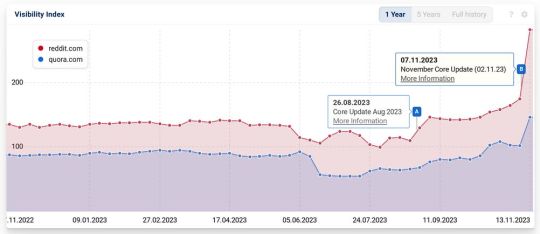
Sistrix
AI revolutionizes the market
The main goal of any entrepreneur is to make a profit. Profit maximization is essential for businesses to stay competitive. In this regard, AI is the epitome of cost-effectiveness, as it allows Netflix to save $1 billion every month on background generation. While AI accelerates content creation, it is not self-sufficient and needs the guidance of an experienced marketer.
If Google bots detect ChatGPT-generated content on your webpages, they might assume it is plagiarized and de-rank your “unoriginal” content. Google’s goal is to move beyond mimicking user searches and adopt semantic and context-based search with Google Search updates like BERT and MUM. This means bots will be able to understand information more like humans do. What does this mean for SEO and SMM professionals?
Be transparent: admit the usage of AI — there is nothing shameful in it
Be genuine: write all the content as if for the user — this is the best strategy to outwit search crawlers
Never delegate your vision: for fostering genuine connections with the customers, it’s better to rely on human-centric approach — make podcasts, webinars, and video content; then amplify that content across all the marketing channels, possibly with the help of AI
Monitor cutting-edge automation: AI can hasten high-ranking content generation, make first drafts, help targeting non-branded keywords, and even conduct website audits
Split-test: AI-generated content might be well, but there is no guarantee it will please target audience, so keep on testing no matter what for the best results
Conclusion
While AI-generated content is becoming increasingly common, its quality is often lacking. Google is aware of this trend and is taking steps to identify and de-rank low-quality AI-generated content. This means that businesses that rely solely on AI-generated content for SEO may see their rankings decline over time.
A better approach is to focus on creating high-quality, handcrafted content. This will require more effort and time, but it will also be more likely to rank well with Google and attract organic traffic to your website. In the long run, this will lead to better SEO results and more conversions.

Handcrafted content does not mean rejecting all changes. However, blindly relying on AI for content creation is not a sustainable strategy. It’s like building a house on quicksand. Instead, use AI as a tool to refine your content, but don’t let it replace your expertise. You are the master of your SEO and SMM efforts. AI is just a helpful ally, not a replacement.
Interesting headings:
Affiliate marketing case studies
Bonuses
Reviews
0 notes
Text
Savings Showdown: Cashback vs. Refund in E-Commerce
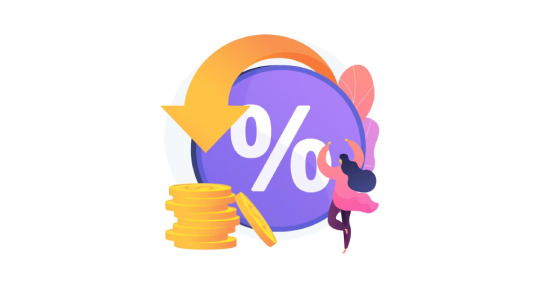
Customer acquisition can be difficult, especially for pocket-size brands. To tip the scales in their favor, many advertisers opt for various marketing strategies. Cashback and refund are prime examples of e-commerce gambits. You give in some funds in exchange for long-term commitment and retention.
While technically the same, they serve different purposes. In this article, we’ll go through the specifics of cashback and refund. We’ll explain which one is better for business and customers, what should a fellow affiliate do while standing in between, how to use both strategies, and how to mitigate common pitfalls. Let’s start with explaining cashback and refund one by one.
Cashback explained

Cashback is a reward system, where a percentage of the purchase amount is returned to the buyer after the transaction. Unlike a straight-up discount, the user has a chance to receive a bit of money in the end, which leaves a good impression. The last step in the marketing funnel is what is usually remembered, and cashback makes sure this step is rewarding and pleasant.
Cashback is frequently provided after the purchase is completed, either as an immediate discount or as a credit to the buyer’s account for future use. It is a form of marketing promotion and can be viewed as a gesture of goodwill. Cashback incentivizes customers to come back and purchase more, thus fostering loyalty and long-term commitment.
Refunds can be different

A refund means you lost a sale. A customer comes back to you displeased, willing to get their money back, either in full or partially. If the customer succeeds, they get a refund… or a chargeback. They represent two sides of the same deal, where chargeback is the financial transaction itself.
When the merchant pays back directly after the return or exchange of a product or report of dissatisfaction with a service — that’s the refund. Refunds are usually requested, when the product is damaged, of poor quality, delivered late, or does not match the description. A merchant has the right to decide whether to reimburse the customer. A refund is typically initiated after the buyer has returned the product. It is aimed at rectifying reputation-threatening situations.
When the payment provider credits the customer — this is when chargeback occurs. This action typically involves some kind of dispute over the original purchase and may come with additional fees for the merchant. A chargeback can be triggered by the same reasons as a refund, like poor quality or late delivery. However, it can also be initiated when the user does not recognize certain charges on their credit card statement.
Defending from refunds & chargebacks
Chargebacks are a major headache for advertisers. Not only do they involve refunding the full purchase price, but they also come with additional fees and time-consuming disputes. Merchants must diligently communicate with the issuing bank to prove their innocence, a process that can be both stressful and frustrating.

Unlike a voluntary refund, chargebacks are a legal battle where merchants are at a disadvantage. They are often initiated by unscrupulous customers who attempt to exploit the system for their own gain. This process can be time-consuming, costly, and emotionally draining for merchants.

Refunds allow advertisers to handle disputes directly with customers, preventing them from escalating to costly and time-consuming chargebacks. While some customers may still initiate chargebacks, having a refund policy in place gives advertisers the opportunity to gather evidence and defend their position. Let’s go through some of the most common situations when cosplaying Marcus Kincaid’s “no refunds” attitude is justified:
Non-refundable products or services, e.g., lingerie or event tickets
Final sale items — just make sure to inform your customers in advance, e.g., clothing
Downloadable content or consumables, e.g., a music album or nutra pills
Custom or personalized orders, e.g., personalized artwork
Expired return windows — make sure you’re not a charity agency and set up boundaries for refunds and chargebacks, e.g., 30 days for a retail item
Abuse of refund policy, e.g., wardrobing
Violation of terms & conditions, e.g., returning a gadget without original packaging
Subscription services, e.g., no refunds for the current billing cycle after a monthly charge
An irritated customer will eventually get what they want. So if nothing from above applies to your particular case, it’s best to meet the client’s demand to avoid additional costs of chargebacks.
Minimizing the risk of refunds & chargebacks
Reducing refund and chargeback disputes requires a proactive approach. By differentiating between legitimate requests and fraudulent claims, advertisers can effectively manage these challenges. Let’s explore legitimate refund scenarios first:
Sell high-quality products & services — to generate fewer unhappy customers, because your goods are the definition of excellence.
Provide professional and quick customer service — to spot customer complaints early and deal with them in a blitz-like fashion.
Ask your payment processor for a merchant descriptor that accurately reflects your brand — to avoid situations when a customer doesn’t recognize some transactions.
Invest in a reliable delivery service — to make sure all your goods arrive on time and undamaged.
Given that merchants are often initially seen as the culprits in refund disputes, it’s crucial to establish a strong defense beforehand. Here’s a list of strategies to minimize fraudulent refunds and chargebacks:
Disable guest checkout — forcing the user to log in makes it easier to trace the shopping carts back to them.
Send a bonus gift or discount after the purchase — claiming a freebie makes it harder to feign an involuntary purchase.
Require additional verification details — on top of the credit card number and expiration date, you can request 3-digit card verification values (CVVs) or 4-digit card identification number (CID). With an address verification system (AVS) in place, you can match the user’s billing address against the one indicated by the card-issuing bank.
Use fraud management systems — they tag suspicious transactions automatically, made, for example, from unknown locations.
While it’s important to safeguard against fraudulent refunds, it’s also crucial to prioritize customer satisfaction. This means making it easy for genuinely dissatisfied customers to obtain refunds without unnecessary hurdles. Remember, a refund is always less costly than a chargeback. It also contributes to positive user experience and can even encourage customers to return for future purchases, boosting retention rates.
Perfecting cashback
So far, we’ve been discussing damage control. In this regard, cashback is different. From the marketer’s perspective, it is a constructive approach, aimed at increasing sales, retention rate, average price tag, etc. Cashback promotions can be used for a plethora of scenarios:
Reaching out to new customers — spark the interest of frugal customers with a freebie
Winning over clients from competitors — the devil is in details and a tiny gift can sway the customers to buy from you
Gathering more insights — use cashback as an excuse for some slightly prolonged surveys to gather more data for your user database for the sake of in-depth segmentation
Saving on costs — the redemption rate of cashback promo is 30–40%, compared to straight-up discounts with 100%, i.e., cashback sways the customers but is not always redeemed!
Maintaining the luxurious allure — upfront discounts might cheapen the brand image, and cashback promos keep the perceived value of the product at its highest
Improving customer retention — integrating cashback promos into a large-scale loyalty program is a go-to solution for keeping the retention rate at its peak
For the cashback promotion to work, it is imperative to go through the following points:
Set up clear objectives
Target an exact audience
Balance out offer lucrativeness with business possibilities
Pick the right time
Communicate cashback promotion
Measure the efficiency of your promotion afterward by gathering the data
Cashback vs. refund in your ads
The choice between cashback and refund marketing depends on various factors, including your advertising goals, target audience, and the nature of your products or services. Neither option is inherently better or worse; they serve distinct purposes.
Generally, it’s better to highlight cashback. A refund is assumed by default and is also a loss for the merchant. Cashback, on the other thing, is a gain, which helps to build customer loyalty and promote future sales. Retaining a customer costs five to seven times less than acquiring a new one — just sayin’ 👉👈.
Nonetheless, bringing refunds to the limelight is justified when you focus on unparalleled customer satisfaction or deal with a complex product of high value. Either way, this helps to build trust and makes it easier to complete a costly purchase. People are naturally hesitant to lose money, so addressing their concerns about potential dissatisfaction can be more persuasive than simply highlighting the potential gains. However, it’s important to strike a balance and avoid suggesting that refunds are commonplace, as this could undermine confidence in your product.
Of course, if your lander allows it, include both. Your product might not be based on impulse buying, which is why you don’t have to rush things up. When you need to shed as much information as possible, a hybrid approach is your best bet. Cashback and refund are not mutually exclusive, it’s just you don’t always have enough space or user’s attention to advertise both options.
When doing A/B testing, you end up highlighting both cashback and refund, albeit not at the same time. Even when not in doubt, it’s best to trust data instead of your hunch. So make sure to precede all your campaigns with split-testing to make sure you walk the right path toward profit.
As a final suggestion, think about implementing instant refunds and cashbacks to please even the most capricious customers. Nobody likes to wait, and by sparing the time of your users, you show them respect.
Conclusion
Cashback is generally a positive concept for advertisers. Refund, on the other hand, aims at rectifying marketing failures. An incentive vs. a warranty — these promotional techniques serve unique goals. At the same time, refunds should not be confused with chargebacks, which are initiated by customers as a last resort and can be more costly for merchants. Proactively handling refunds is crucial to minimize chargebacks.
Showcasing both cashback and refund options would be ideal, but that’s not always an option. Whether you want to win over customer loyalty or boost future sales, cashback is your default pick. However, “rocket science” products or high-end items might require extra persuasion. This is when highlighting the refund option is better.
Still… start all your campaigns with A/B testing. Choosing between advertising cashback or refund is easier when you have data to back up your decision. Also, think about investing in instant refunds and chargebacks to make sure the user’s experience with your product is hassle-free.
Interesting headings:
Affiliate marketing case studies
Bonuses
Reviews
0 notes
Text
Streamline Your Affiliate Marketing Journey with AI-Powered Social Listening

Staying ahead of the curve is crucial for achieving sustainable growth in affiliate marketing. Monitoring social media conversations manually is a time-consuming and often ineffective endeavor. Enter AI-powered social listening, a game-changer that empowers affiliates to streamline their processes, gain actionable insights, and propel their affiliate marketing strategies to new heights.
By embracing AI-powered social listening, you’ll gain a 360-degree perspective of your affiliate marketing landscape, enabling you to make informed decisions that drive engagement, increase conversions, and ultimately, elevate your affiliate marketing ROI.
Why you need AI to gauge the mood

Stay on top of trends and conversations
Social listening lets affiliates keep a pulse on their niche by identifying rising topics, trends, and influential conversations. Tracking niche-relevant discussions across social platforms enables affiliates to discover new opportunities and leverage trending themes.
For example, quickly identifying when a new product gains traction in your niche allows you to create content and capitalize early. Continuously monitoring conversations ensures affiliates create content that resonates by meeting target audiences where they already are.
Understand your audience’s likes and motives
Developing a deep understanding of your target audience’s pain points, interests, values, and motivations is crucial for crafting content that converts. Social listening provides invaluable real-time insights into audience needs, frustrations, and desires.

Tracking the competition
Social listening also enables affiliates to benchmark against competitors by identifying promotion strategies and content that gains traction. Seeing which posts or ads resonate allows affiliates to assess what is working in the niche and either adopt or improve upon it.
Monitoring competitors also provides warning signs to avoid oversaturated strategies. Social listening grants a 360-degree view of the affiliate niche that fuels data-driven decisions.
Social listening with AI
AI algorithms are the secret ingredient that transforms social listening from a chore into a superpower. These smart tools automate all the tedious tasks, leaving you with a treasure trove of actionable insights that can turbocharge your affiliate marketing strategies. AI-powered social listening tools go way beyond simple keyword analysis. They’re like having a team of expert analysts on your side, helping you.
Sentiment analysis: understand your audience’s deepest desires and frustrations
Sprout Social: this comprehensive tool analyzes social media conversations to gauge sentiment, identify key topics, and track brand mentions.
Hootsuite: integrated machine learning in Hootsuite helps you identify relevant conversations, analyze influencer mentions, and monitor brand sentiment across social media platforms.
Brandwatch: leverage advanced sentiment analysis features to understand audience sentiment, measure brand reputation, and uncover hidden trends in your niche.
Influencer identification: identify and partner with the most influential voices in your niche
BuzzSumo: use their influencer discovery tool to find niche experts, track their engagement, and assess their influence.
Upfluence: this influencer marketing platform helps you identify and connect with influential individuals who hold sway over your target audience.
NeoReach: use their influencer discovery tool to find niche experts, track their engagement, and assess their influence.
Trend forecasting: spot emerging trends before anyone else and capitalize on them first
Google Trends: use this free tool to track search trends, identify popular topics, and predict future trends in your niche.
Talkwalker: employ its trend forecasting capabilities to identify emerging topics, monitor keyword trends, and uncover hidden patterns in social media conversations.
Data visualization: visualize complex data in clear, easy-to-understand charts and graphs
Chartio: create interactive charts and dashboards to visualize social media data, track performance metrics, and identify trends.
Tableau: this data visualization platform allows you to create visually compelling dashboards, explore trends, and communicate insights effectively.
Qlik Sense: use their intuitive data visualization tools to transform social media data into actionable insights.

Key takeaways
By implementing leading AI social listening tools tailored to their specific affiliate marketing goals, businesses can gain a competitive edge by unlocking superior consumer and market insights. Combining the strengths of multiple AI technologies provides a comprehensive view of the affiliate niche from all angles. Staying at the cutting edge of AI innovations will ensure that affiliates stay ahead of the curve and maximize their growth opportunities.
Interesting headings:
Affiliate marketing case studies
Bonuses
Reviews
0 notes
Text
What Changed in Advertising in 2023: Trends for 2024

2023 was a bumpy ride, for sure. The economy was shaky, customers were careful with their spending, AI was on the rise, and there were lots of rules about privacy and data tracking. It all messed with the marketing game. In this article, we will talk about digital and affiliate marketing trends and its prospects in 2024.

The shift in ad spend
In 2023, many marketers had an increase in ad spending compared to 2022. Half of the people surveyed by Stacked Marketer were spending the same amount as before, yet many increased their ad budgets by 10–25%.
In particular, spending on physical products increased significantly. This is most likely due to media inflation: advertising prices (placement and production) are rising and competition is increasing.
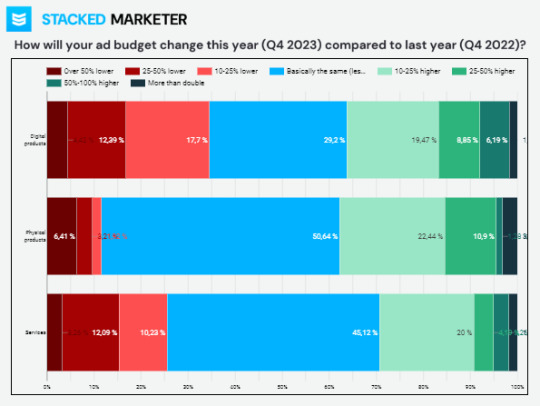
Also, keep in mind that this study went down in the last quarter of the year. You know how it is — sales always take off at the end of the year. Christmas and New Year’s roll around, and people are splurging on gifts, grub, and getaways. With a ton of products flooding the market at that time and brands fighting tooth and nail for attention, companies gotta step up their game. So it totally makes sense that advertising costs would spike during that period.
Which channels and sources emerged as favorites?
According to the same research, the advertising dominance of Meta and Google continues, with a significant majority of advertisers continuing to allocate their budgets to these platforms.
Notably, TikTok is losing ground to LinkedIn, which has recently introduced new ad features and algorithm updates.
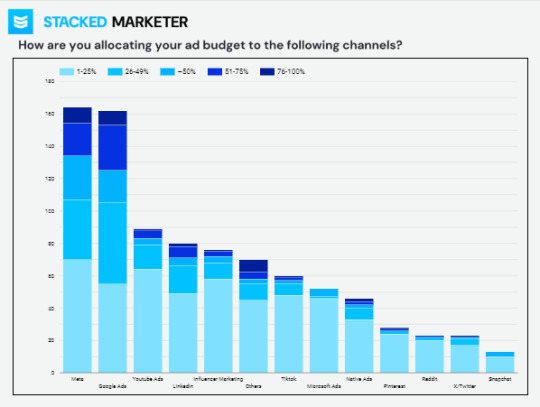
Influencer marketing is also worth highlighting — this is a really notable trend of the previous year and is likely to intensify in 2024. Our internal research shows that Influencer marketing is especially booming in the iGaming niche.
And since we started talking about niches, let’s point out the most popular traffic sources for different affiliate marketing niches in 2023:
E-commerce: Facebook, Instagram, Google Ads, BIGO Ads
iGaming: Facebook, Google Ads, Google UAC, ASO, SEO
Mobile gaming: Facebook, Mintegral, BIGO Ads, SEO
Tips: • Test the local traffic sources of the GEOs you’re working with. Very often they give good results and are a valuable addition to traditional platforms, and sometimes even a good alternative. • Don’t spread yourself across different sources, choose one and invest your efforts and resources there. • As for SEO, buy domains and links today, in a year or two the current prices will seem like pennies.

The current landscape of AI in marketing
It looks like the year ended just like it started — all about artificial intelligence. And now it seems like most marketers are onboard with AI, with 36% saying they use it in their daily marketing. Digital product advertisers are really into AI, with 42.3% using it every day, while physical product marketers are the least interested, with 12.3% saying they never use it. That’s astounding because there seem to be so many ways of using AI in e-commerce. Probably, the situation will change in 2024.
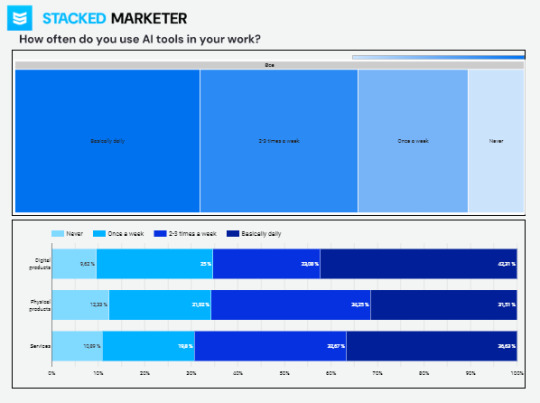
Tip: Master AI writing tools — it will save you a lot of budget.
What to expect in 2024?
The advertising scene in early 2024 can be said to be shaped by the challenges and trends of the previous year.
Meta and Google continue to dominate as the preferred advertising platforms.
Influencer marketing has become a notable trend.
The use of artificial intelligence in marketing is gaining momentum and a significant portion of marketers are incorporating it into their daily strategies.
Regulation and compliance will continue to be a top priority for brands and affiliates alike. Brands will be looking to work with affiliates who are compliant with all applicable laws and regulations, including those related to data privacy, gambling, and financial services. Affiliates will need to be aware of the latest regulations in their target markets and make sure they are in compliance.
The growing importance of mobile traffic will continue to drive affiliate marketing trends. More and more people are using their mobile devices to shop, play games, and engage with content. Affiliates who focus on mobile will be well-positioned for success.
Nutra and e-commerce
Growth in emerging markets will continue to drive affiliate marketing in these niches. Brands and affiliates will be looking to tap into the growing markets in Africa, Latin America, and Asia.
The rise of influencer marketing will continue to be a major trend in these niches. Brands and affiliates will be looking to work with influencers who can reach and engage with their target audiences.
iGaming
The legalization of iGaming in more countries will create new opportunities for affiliates. Brands and affiliates will be looking to expand into new markets.
The growing use of AI will be a major trend in this niche. AI can be used to automate tasks, personalize campaigns, and improve targeting.
Payment systems
The growing popularity of cryptocurrency will create new opportunities for affiliates. Brands and affiliates will be looking to accept cryptocurrency as a payment method.
The rise of mobile payments will continue to be a major trend in this niche. More and more people are using their mobile devices to make payments.
Mobile apps
The growing popularity of iOS will continue to be a major trend in this niche. More and more people are using iOS devices.
The rise of PWA will continue to be a major trend in this niche. PWA apps offer a better user experience than traditional mobile apps.
Going forward, marketers need to constantly update their technical knowledge and carefully select traffic sources by looking at local options and investing efforts in a targeted manner.
Best of luck with your marketing endeavors.
Interesting headings:
Affiliate marketing case studies
Bonuses
Reviews
0 notes
Text
Understanding Generative Engine Optimization (GEO): A New Era for SEO

When it comes to establishing a strong online presence, Search Engine Optimization (SEO) is a crucial strategy for businesses. By optimizing their websites and content, marketers and webmasters can increase their visibility on search engine result pages (SERPs), attracting organic traffic and potential customers. However, as the digital landscape continuously evolves, new approaches to SEO are emerging. One such strategy that is gaining traction is Generative Engine Optimization.
Generative Engine Optimization (GEO) leverages artificial intelligence and machine learning to optimize a website’s content, user experience, and technical elements for improved search engine rankings and enhanced user engagement. Unlike traditional SEO, which relies on predefined rule sets and keyword targeting, GEO uses algorithms to dynamically generate and optimize content based on user behavior, search trends, and personalized preferences.
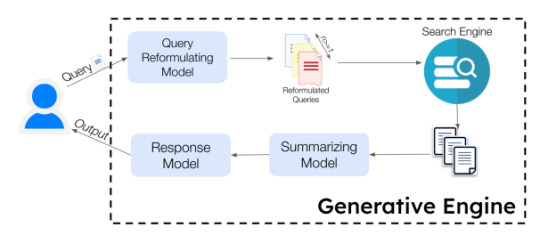
In this article, we will delve into the concept of GEO and explore its potential benefits for your business in enhancing online visibility and attracting targeted traffic.
The benefits of GEO
Generative Engine Optimization, offers numerous benefits to businesses looking to enhance their online presence and drive success through search engine optimization (SEO):
Improvement of search engine rankings. Traditional optimization techniques often focus on using popular keywords, but GEO takes it a step further. By analyzing user behavior and preferences, GEO can tailor the website’s content to match individual search queries more accurately. As a result, search engines recognize the relevance of the website, thus increasing its chances of ranking higher in SERPs.
Driving organic traffic to a website. By understanding the unique needs and preferences of target audiences, businesses can create compelling and personalized content, crafted specifically to resonate with their ideal customers. This personalized approach leads to increased visibility in search results, attracting more organic traffic to the website.
Dynamic approach for higher conversion rates. By delivering personalized content to the target audience, you can create a seamless user experience. GEO ensures that the right content, products, or services are presented to users at the right time, significantly increasing the chances of conversions. This personalized approach also builds trust and credibility, making visitors more likely to take desired actions.

How to implement GEO
Implementing Generative Engine Optimization effectively requires a strategic and well-planned approach. Here’s how to do it efficiently:
Comprehensive keyword research. The first step in implementing GEO is conducting thorough keyword research.
Identify the search terms and phrases that your target audience is using to find products or services similar to yours.
Use keyword research tools to uncover relevant and high-traffic keywords that align with your GEO objectives.This research forms the foundation for optimizing your content and website structure.
Utilizing AI tools and algorithms. By analyzing user behavior and preferences, AI-powered tools can help create personalized and targeted content that resonates with your ideal customers.
Optimizing website structure and design.
Ensure that your website is user-friendly, fast-loading, and mobile-responsive.
Organize your content logically and intuitively, making it easy for both search engine crawlers and users to navigate.
Pay attention to on-page SEO elements, such as meta tags, headings, and alt tags, to further optimize your web pages for GEO.
Continuous monitoring and data analysis. Utilize data-driven insights to track key metrics, such as search engine rankings, organic traffic, and conversion rates. Regularly review and analyze this data to understand the impact of your GEO efforts and identify areas for improvement.
Implementing GEO requires a commitment to ongoing optimization and improvement. Continuously monitor the performance of your GEO strategy, keeping an eye on shifts in user behavior and search engine algorithms. Stay up-to-date with the latest industry trends and adapt your strategy accordingly to maintain a competitive edge.
Common challenges and solutions
Implementing Generative Engine Optimization can present businesses with various challenges along the way. It’s crucial to identify these obstacles and have effective strategies in place to overcome them. Here are some common challenges faced when implementing GEO and the corresponding solutions:
Technical complexities
One of the challenges businesses may encounter when integrating GEO is technical complexities. Implementing advanced algorithms and AI-powered tools can require technical expertise and resources. Additionally, optimizing website structure and design to accommodate GEO requirements may involve complex coding or development changes.
Collaborating with experienced developers or technical experts can help navigate these complexities. Partnering with professionals who are well-versed in implementing GEO can ensure a smooth integration process. Alternatively, exploring user-friendly platforms or software solutions that simplify the technical aspects of GEO implementation can also be considered.
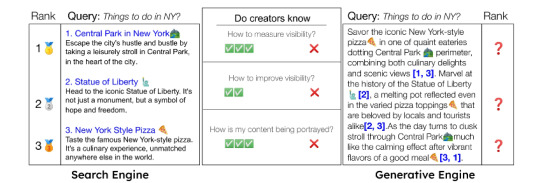
Integration issues
Integrating GEO with existing systems, such as content management systems or CRM tools, can sometimes pose challenges. Ensuring seamless data transfer and compatibility between different technologies may require special considerations.
Prioritize selecting tools and software that offer easy integration capabilities. Look for solutions that provide APIs (Application Programming Interfaces) or pre-built integrations with commonly used systems. Conduct thorough compatibility tests to identify and address any integration issues early on.
Algorithm updates
Search engine algorithms are constantly evolving and being updated. Keeping up with these changes can be challenging, as algorithms heavily influence GEO strategies and effectiveness. An algorithm update can potentially impact websites’ search rankings and visibility by practicing GEO.
Stay updated with the latest trends and best practices. Regularly monitor industry news, attend relevant conferences, and follow reputable online resources to stay informed about algorithm updates, search engine guidelines, and emerging GEO techniques.
Final thoughts
While there may be challenges associated with implementing GEO, such as technical complexities and adapting to evolving algorithms, businesses can overcome these obstacles through proper training and staying informed about industry trends. Embracing GEO and continuously refining optimization efforts will empower businesses to attract targeted traffic, improve search engine rankings, and increase conversion rates, ultimately driving success in the digital landscape.
Interesting headings:
Affiliate marketing case studies
Bonuses
Reviews
1 note
·
View note
Text
Max Out iGaming Profits with RTP in Affiliate Marketing

Have you heard players buzzing about “RTP” in online casinos or betting sites? As an affiliate, this little term carries big potential to boost your iGaming profits! RTP simply means “Return to Player”. It’s the percentage of wagers the game pays back to players over time.
Games with higher RTPs attract more players as the odds look better. By promoting high RTP games, you send players to the most promising opportunities around. Monitoring RTPs also prevents wasted marketing efforts. Focus creatives on titles players currently love by their payout stats rather than dated picks.
So whether you’re a card shark or betting fish, swim towards the waters with the juiciest RTP rates. Success comes from matching player preferences, so keep an eye on what keeps players biting longest.
Why is RTP important in affiliate marketing?
There are a few reasons why RTP is important in affiliate marketing:
It helps you to identify high-converting campaigns. A higher RTP means that the campaign is more likely to generate profits for the advertiser. This is a valuable metric for affiliate marketers, as it can help them to focus their efforts on the campaigns that are most likely to be successful.
It can help you to negotiate better commissions. If you can show an advertiser that your campaigns have a high RTP, they may be more willing to offer you higher commissions. This can increase your overall earnings from affiliate marketing.
It can help you to build trust with advertisers. Advertisers are more likely to partner with affiliate marketers with a history of generating high RTPs. This can help you to land more high-paying campaigns.
By tracking your RTP regularly, you can see how your campaigns are performing and identify any areas where you can improve. This can help you optimize your campaigns and drive even more traffic and conversions.

Understanding RTP in iGaming
In the iGaming sphere, the RTP mirrors the Conversion Rate’s role. The higher the RTP, the more players believe in their winning chances. Similarly, a higher Conversion Rate instills confidence in users regarding the likelihood of their desired action being fulfilled.
How to calculate RTP
RTP represents the percentage of funds that, over time, iGaming operators return to players. To calculate RTP, you need to divide the total revenue generated by the campaign by the total cost of the campaign. The result is expressed as a percentage.
For example, with an RTP of 95%, it’s like a promise that, for every $100 wagered, players can expect to receive, on average, $95 back. The remaining $5 goes to the operator, ensuring their fair share of the pie.
Remember about volatility
Game volatility plays a significant role in shaping RTP. It’s like the mood swings of a temperamental gambler — sometimes calm and steady, sometimes wild and unpredictable. Game volatility is a measure of how much the payout frequency and size of payouts can vary in a game. It is an important concept for both players and game developers.
For players, this means that:
High-volatility games tend to have large payouts, but they are also less frequent. This means that you may go for long periods without winning anything, but when you do, it will be a big win.
Low-volatility games, on the other hand, tend to have smaller payouts, but they are more frequent. This means that you will win more often, but the payouts will be smaller.
Both RTP and game volatility can influence player behavior. Players who prefer to gamble often and in smaller amounts may be more attracted to low-volatility games, as they offer a higher chance of winning more frequently. Players who prefer to gamble less often and in larger amounts may be more attracted to high-volatility games, as they offer the potential for larger payouts.

Game developers can use RTP and game volatility to target specific player demographics. For example, a casino operator that wants to attract casual players may focus on promoting low-volatility games, while a casino operator that wants to attract high-rollers may focus on promoting high-volatility games.
How to improve RTP
Now that we know why RTP is so crucial in iGaming ad campaigns, there are a few things you can do to improve the RTP of your affiliate marketing campaigns. By understanding these factors, affiliate marketers can craft campaigns that resonate with players and generate a steady stream of conversions.
Become a bounty hunter of profits: seek out high-RTP offers, the equivalent of hidden treasures. These alluring opportunities attract seekers of fair and rewarding experiences, resulting in a treasure trove of commissions for you.
Craft your pitch, pirate-style: tailor your marketing strategies to fit the game’s volatility and payout frequency. For low-volatility games, emphasize consistent wins like a steady stream of doubloons. For high-volatility games, highlight the potential for massive payouts, like the legendary pirate’s treasure chest.
Keep your eye on the prize: continuously monitor the RTP of your campaigns, just like a watchful pirate keeping an eye on their booty. Identify areas for improvement and adjust your strategies accordingly, ensuring you stay ahead of the game and amass a fortune.
To conclude
Imagine you’re a treasure hunter searching for hidden riches. RTP, or Return-to-Player, is like your compass, leading you to the most rewarding games in the iGaming realm. It’s a percentage that represents the amount of cash players can expect to win back, on average, from their wagers.
High-RTP games are like treasure chests brimming with gold — they give players a better chance of winning, attracting more adventurers to your promotions. By keeping an eye on RTPs, you can uncover the most sought-after games that resonate with players. And happy players mean hefty payouts!
Interesting headings:
Affiliate marketing case studies
Bonuses
Reviews
0 notes
Text
Bet on It: Building Your Sportsbook from the Ground Up

Hey, have you seen how sports betting is totally taking off? So, maybe now is the time to jump in and be the go-to bookie? Well, the pot is getting bigger every day. If you’re nodding along thinking, “Yeah, this sounds like my jam,” then you’re probably wondering how to get in on the action, right? We’re dropping a guide with all the steps to kick off your own sportsbook.

The tech side of your sports betting business
So you’ve decided to jump into the sportsbook pool — cool. When it comes to the gear you need, you’ve got two main plays:
DIY your own betting platform
Grab a ready-to-go package from the pros
Going DIY with your sportsbook tech
If you’re thinking of building your sportsbook platform from the ground up, you need to be loaded with iGaming smarts and totally get the tech side of things. Taking this route means you’re in charge of all the details — from coding to customer service. It’s a big ask. You’ll need a squad of devs, managers, risk analysts, etc.
Rigging up your own system is a giant pile of cash and effort, and it’s not guaranteed to pay off. Plus, we’re talking a year, maybe more, just to get it market-ready.
Snagging a turnkey solution
If you’re iGaming savvy, tailoring your own setup could be a smart move to level up. But if you’re just breaking into the scene, why not score a reputable, ready-made sports betting package? It’s quick and way cheaper.
Why take the turnkey route? Here’s the deal:
It’s kinder to your wallet. Skip the drama of building and running a full team, and dodge those long chats (and costs) with payment and data vendors.
Lightning-fast launch. You can roll out in weeks. Crafting your own core software? A year. Minimum. And that’s without the extra setup stuff.
Solid and tested. When you pick a pre-built product, you’re not just getting code; you’re scoring a dedicated team, a legacy of success, and some serious technical chops.
Now, before you dive in and become a bookie, picking the right software is key. How do you know who’s the real deal?
Check out how customizable it is. You want more than a cookie-cutter setup; you need tech that can groove with your vibe.
Size up the support on offer. Things like player support, design peeps, risk managers, tech wizards — they’ll make or break your rep. It’s sweet if your supplier can cover this.
Balance the cost against what you’re getting. Saving dough is great, but don’t just chase the cheapest options — it might cost you more in the long run.
Data providers
You can’t really kick-start this game without one. Picking a foolproof supplier is huge because they’ll help you grab a piece of the market and keep risks at bay. So, here’s the scoop if you’re looking to become a bookie but don’t have much XP — choosing a sketchy data provider can bite you back with dodgy odds or slow updates, messing with your bank and your rep.
How to find a top-notch sports data provider:
Accuracy is king. Get this wrong, and you’re not just losing cash on double-checking data; you’re also playing with your customers’ trust if bad info leaks onto your site.
The data delivery. There’s a bunch of ways to get your hands on data, and it’s going to fit snug with your setup. Make sure you get the instructions manual — crystal-clear documentation means easier and cheaper setup.
Managing the risky business. A risk management tool is key for spotting and handling whatever comes your way. Without it, you’re flying solo on making choices backed by solid facts.
Be the one who stands out. You could cook up your own stats and info, but that’s going to stack the costs — more dough, more dev time, and more hands needed. That’s why snagging a provider that dishes out exclusive data makes a ton of sense.
Starting from the ground up means it’s on you to plug into a data provider — and that usually costs extra. Contracts can be a maze, even for the savvy operators, and hidden fees are a real pain. Even after you sign on the dotted line, don’t expect to start using that data on day one.
Web design
You’ve got a mix in the crowd; some folks are there for the exclusive events or crypto bets, others are hunting for those sweet bonus deals. Design isn’t everything, but if your site looks like it’s stuck in the ’90s, it’s a one-way ticket for players to bounce to the competition.
Alright, so what’s the game plan for a killer betting site design? It has to be no sweat to use. If your visitors have to play hide-and-seek with your “sign up” or “promo” buttons, they’re out. And don’t forget sorting or filters — big plus for the browsing game.
Next up, make sure your design feels like it belongs in the betting world. Roll out the red carpet with colors, pictures, and a font that says, “This is where the betting magic happens” (but don’t take it too literally — be more creative).
Then, align it with what you’re hustling — grabbing attention and nudging players to sign up, bet, or catch the latest events. Make sure calls-to-action are practically winking at your visitors.
And don’t forget about the mobile version. If it isn’t smooth like butter, you’re basically giving the cold shoulder to a hefty chunk of your audience.

Legal stuff and payment integrations
Brace yourself, because in this niche, the legal stuff is like a maze on steroids. Picking where to plant your flag and which license to nab is a big deal — it’s all about where you want your biz to shine and who you’re aiming to bring in.
Going solo for a license? You’re gonna need:
A squad of legal eagles who know their way around iGaming laws.
Patience, loads of it.
Now, let’s gab about the money movement. Chatting up payment providers can feel like running a marathon. You can’t just hook up a couple of payment methods and call it a day. Your players, they crave choices — cards, digital wallets, crypto, etc. For your sportsbook to really vibe with your users, you’ve got to think hard about what payment systems they groove to. It’s all about the markets you want to enter.
Building a legal dream team and wading through paper can bog you down, big time. It gobbles up what you can’t afford to lose — time to hit the market and test out those genius strategies. Sometimes, it’s way smarter to snag a white label sportsbook setup — a package deal with all the licenses you need and a bunch of payment methods ready to roll. Dump the legal headaches on your provider and get a head start.

Marketing
So, you’ve got your sportsbook all jazzed up and looking fly. Now, you have to make sure people actually want to hang out there. It’s showtime for your marketing game. We’re talking about getting the word out — who you are and what you’re all about:
Craft a statement that sums up what you’re bringing to the table.
Check out the competition and see where you stand.
Whip up something that makes you the go-to spot that no one else can touch.
Now, if you’re going to keep things running smooth inside the biz, you’ll need pros. A killer marketing crew is a must — they’re the wizards behind the curtain handling all the hype, setting up killer tournaments, and figuring out what freebies to throw the crowd.
Now, let’s talk perks because who doesn’t love a good bonus? They can totally tip the scales when players are deciding where to throw down their bets. Spice up your offers with themed tournaments, and personalized rewards. Give them that VIP feel on their betting journey.
Though, where there’s honey, there are bees — and in the betting world, that means bonus hunters and scammers. So, while you’re doling out bonuses and getting players hyped, make sure you’ve got a top-notch anti-fraud team. Go with a software provider that’s got their guard up.
Okay, you’ve got a sleek website and a tempting bonus menu, which is solid. But to really get your name out there, think announcements, interviews, press releases — all that jazz, especially in iGaming forums and on news feeds where everyone’s already hanging out.
Don’t just stop at SEO and ad banners. Contextual ads and affiliate marketing — these are your bread and butter. In the iGaming business, it’s all about being seen. And with search engines putting the squeeze on, having a network of affiliates is like having gold.
Final thoughts
Jumping into the sports betting world is no walk in the park — it’s a big deal that needs you to really do your homework. It’s not just about having a slick website or throwing around cool bonuses that makes your sportsbook the place to be. What really matters is the crew backing you up — their smarts, their know-how.
Just ask any seasoned owner, and they’ll tell you straight: hooking up with a full-service squad that knows the ins and outs of running an iGaming brand is the smart move when you’re kicking off your sportsbook.
Interesting headings:
Affiliate marketing case studies
Bonuses
Reviews
0 notes
Text
iGaming Trends 2024: What Should We Expect?

As we near the end of 2023, we can’t help but look ahead and wonder what’s in store for the iGaming industry in 2024. Every year comes with its own share of ups and downs. In this context, 2023 was no different, with changes in regulations, a stronger emphasis on responsible gambling, and surprising disruptions from cyber threats to big-name companies. To figure out where we’re headed, let’s first take a good look at where we’ve been and guess what’s next.
Regulatory dynamics
In 2023, the rules for online gambling went through some big changes. Before, places like Malta and Curaçao were top picks for licenses because they covered lots of countries and had good tax rules. But now, some countries (e.g., Germany, Sweden, the Netherlands) want to make their own rules. This change means Malta and Curaçao aren’t as popular as before.

Local regulations in the world of iGaming are getting more and more specific to each country. They’re not just a legal requirement, but a sign of the country’s effort to make the most of the iGaming industry. When regulations are thought out well, it’s good news for companies looking for a stable and growing market. It also means a safe place for players and a steady income for governments.
How AI and Machine Learning are shaking things up in iGaming
Everyone knows Artificial Intelligence (AI) and Machine Learning (ML) are kind of a big deal by now, especially in the iGaming world. The iGaming folks are super tech-forward and didn’t waste any time jumping on the AI train. They’re using it for everything from marketing and design to making the gaming experience super custom and safe for players. AI makes things run smoother and more personalized than ever.
Marketing
AI and ML dig into what players do and like, and then whip up promotions and ads that speak directly to them, ramping up the chances of bringing in more bucks:
Predictive analytics. Casinos are playing the fortune-teller, predicting which players will drop the big bucks and hitting them up with offers to stick around.
Player segmentation. AI is sorting players like a deck of cards, dealing out super-targeted ads based on what each player digs.
Player behavior analysis
ML’s like a super-sleuth, scanning how players roll to make sure everyone’s having a blast and calling out the sketchy stuff:
Anomaly detection. It’s catching players who are acting sus, which might mean they’re up to no good.
Recommendation systems. These platforms are doling out recommendations that hit the mark based on your gaming history.
Churn predictions. Playing the guessing game on who might bail, so the platform can swoop in with a reason for them to stay.
GameDev
AI and ML are the new game dev sidekicks, speeding up the boring test stuff and giving tips for games that players will totally be into based on the real deal feedback:
Player feedback analysis. They’re sifting through player rants and raves to tweak games just right.
Midjourney revolution. Whipped up a mountain of game artwork and cut design time big time.

Chatbots
Always on deck to chat, these bots and helpers are like the ultimate support crew, dealing with the easy stuff and giving players the lowdown on how to rock the game:
24/7 customer support. Bots are all hands on deck, all the time, ready to tackle any questions and bump the big issues to the humans.
Game assistance. These virtual wingmen make sure players get the game and dish out pointers for a killer play.
Responsible gambling
AI’s got a player’s back, keeping an eye out for dicey gambling moves and stepping in with a timeout when players need to reel it in:
Behavior monitoring. It’s keeping a watchful eye for any red flags that scream “trouble” in player behavior.
Self-exclusion enforcement. Making sure players who’ve said “no more” can’t waltz back in without a hitch.

iGaming in a world without cookies
The online world is getting ready to cut out cookies — that’s right, Google is ditching third-party cookies on Chrome by the second half of 2024. This is all about giving us more privacy online, and it means the iGaming industry has to switch up the way they do things online. Here’s how to get ready for the change:
Bulk up on first-hand info. Double down on getting folks to sign up so you can collect your own data. Just make sure you’re playing nice with privacy rules like GDPR.
Get creative with privacy-first ads. Time to snoop around for new ad tech that cares about keeping things private, like Google’s Privacy Sandbox.
Say yes to consent management. Use tools that handle users’ data permissions in a clear and easy way.
Gamification
What’s happening in the iGaming scene now is a big mash-up between gaming and gambling — they’re morphing into one another. It’s not just some passing fad; people are looking for more than just spinning reels or flipping cards. They want to be part of the game.
Players these days are after the thrill of the game, so just having a bunch of games to choose from doesn’t cut it anymore. They expect to be wowed. Here’s what’s hot in keeping players glued to the screen:
Gamification goodies. Throwing in things like badges, trophies, secret levels, and tourneys keeps the energy up.
Tournaments. Players get to one-up each other, which spices things up with a little friendly throwdown.
Leaderboards. Everyone wants to be top dog. Climbing leaderboards gives that buzz to keep on playing better.
Story mode. Players get sucked into another world, where every mission is like a step up their own personal Everest.
Adding these gamified twists is a smart move. It’s not just about keeping players around; it gets them playing more. As we move ahead, tossing gamification into the social media mix looks super promising, even with the rules around gambling online. If players start showing off their victories and epic moments, they’re pretty much waving your flag for free, drawing in fresh faces.

Social vibes
Social features are about to become the next cool thing that gets players really hooked. We’re talking about teaming up for tournaments, throwing down challenges, and joining forces in team battles. It’s all about that group vibe, bringing together the kind of team spirit people dig in the real world into the online gaming scene.
At the heart of this trend is our basic need to connect with others. It’s not just the games that pull people in; it’s the chance to be part of something, to rub virtual elbows with others, and be part of a squad. This hits the mark especially with the younger crowd who are all about making memories with others.
Collaborations with influencers
Influencer collabs are the new hotness in the iGaming world, even though there are tons of rules and touchy issues to navigate. Getting influencers on board is like catching a ride on their cred to reach their fanbase. If someone with clout gives a thumbs-up to a game, their followers perk up and are more likely to dive in. So how do you play this game? Here are some classic moves:
Live streaming sessions where influencers are hitting up the games
Sweet deals and promo codes exclusive to their followers
Free stuff up for grabs that’s decked out with the game’s logo.
And it’s all not just about the usual gamer streamers. iGaming brands can spread their nets to catch:
Bloggers that hit just the right niche.
Social media big shots with legions of fans.
Pro athletes to get the sports betting crowd fired up.
Celebs to sprinkle that star dust and grab everyone’s attention.
In the iGaming influencer league, it’s all about more than just likes or shares. It’s about shared vibes and values, syncing up chances, picking the perfect platform, and doing stuff that makes the audience go ‘wow’. When all these stars align, influencer collabs can be that magic play that puts a brand on the leaderboard.
Final thoughts
The iGaming landscape in 2024 is poised to be as dynamic and innovative as ever. The seismic shifts in regulatory frameworks across the globe have set a complex but hopeful stage, creating pockets of opportunity for those ready to adapt to new markets and emerging consumer preferences. AI and Machine Learning will continue to redefine every aspect of iGaming. For companies willing to embrace the change, respect their players, and innovate ceaselessly, the future is not a gamble, it’s a game they are set to win.
Interesting headings:
Affiliate marketing case studies
Bonuses
Reviews
0 notes